Interviews
Creating Intimacies: On the Spring Sessions Programme in Amman
Toleen Touq in conversation with Reema Salha Fadda
Spring Sessions is an annual three-month art residency programme in Amman that was founded four years ago with a clear goal in mind: to address the absence of critical and experiential art education in Jordan. The programme brings together international artists, to host participatory workshops and collaborative sessions with young and emerging artists from across the globe. Now in its fourth year, Spring Sessions has seen over 80 participants and 30 resident artists and cultural practitioners take part in the programme. In a conversation between Toleen Touq, co-founder of Spring Sessions and Reema Salha Fadda, Commissioning Editor at Ibraaz, the two discuss the evolution of the programme, and the accumulative working process that centralises trust, friendship and creating intimacies amongst participants, educators and mentors.

On Building Nations
A two-part conversation with Szabolcs KissPál and Mahmoud Khaled
Szabolcs KissPál and Mahmoud Khaled talk about their exhibition On Building Nations (August 19–October 23, 2016), which was the result of Edith-Russ-Haus' annual production-oriented grant, provided by the Foundation of Lower Saxony, which enables the realization of three projects per year through an open-call process finally judged by an international jury that includes the curators at Edith-Russ Haus.

Unfolding the Structures of Sound
Cevdet Erek in conversation with Başak Şenova
Cevdet Erek played in the music band Nekropsi while studying BA in architecture at Mimar Sinan University of Fine Arts, then he studied 'Sound Engineering & Design" at the Center for Advanced Studies in Music (MIAM) at Istanbul Technical University. Has presented sound projects at exhibitions including dOCUMENTA 13 (2012), the 11th Sharjah Biennial (2013), and this year, he will also be showing at the 57th Venice Biennale, a site-specific work that will be presented in the Pavilion of Turkey. In this conversation, Erek talks about his practice to Başak Şenova.
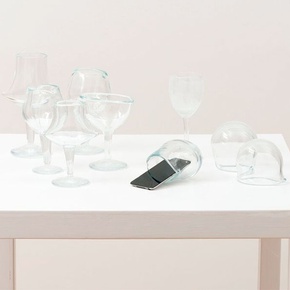
History in Play
Hammad Nasar in conversation with Reema Salha Fadda
Walid Raad's artistic intervention, titled Section 39_Index XXXVII: Traboulsi, created as part of Asia Art Archive's (AAA) 15 Invitations imagined a fictive artistic collaboration between Hong Kong based artist Ha Bik Chuen and Suha Traboulsi (a fictional Lebanese art historical figure). In this conversation between Hammad Nasar, former Head of Research & Programmes at Asia Art Archive, and Reema Salha Fadda, Commissioning Editor at Ibraaz, the two discuss Raad's intervention as a starting point for questions of art historiography and the role of art-making in the present.

Cultivating Continuities
Suha Shoman in conversation with Amin Alsaden
'Few are those who are artists and who have simultaneously established and run a public art institution. Few are those who have been interested in, supported, and collected contemporary Middle Eastern art since before the major shift in focus that occurred within the last decade', writes Amin Alsaden of Suha Shoman, Founder and Chair of Darat al Funun, the Khalid Shoman Foundation, Amman. In this conversation, Shoman, who trained as an artist, talks to Alsaden about her current perspectives on the foundation, Arab art, and the world at large.

Systems of Fragments
Hajra Waheed in conversation with Stephanie Bailey
This interview takes two exhibitions Hajra Waheed staged in the UK in 2016 as a starting point through which to explore Waheed's expansive practice: Sea Change, Chapter 1: Character 1, In the Rough, at London's Mosaic Rooms, and The Cyphers at BALTIC Center for Contemporary Art in Gateshead. Here, Waheed talks to Ibraaz Senior Editor Stephanie Bailey about these exhibitions, and themes arising from them that intertwine with the artist's own background growing up in Saudi Arabia, before moving to North America.

Enunciation Rather Than Representation
Alya Sebti in conversation with Göksu Kunak
In April 2016, curator Alya Sebti assumed the role of director at the renowned ifa Gallery in Berlin. Since 2015, she has been working on various narrations in the space of ifa Gallery Berlin and Stuttgart. In this interview with Göksu Kunak, Sebti talks about the ideas that underpin her perspective and position as a curator in the international art world. She also discusses the upcoming theme-based programme at ifa Gallery Berlin, where the white cube will be transformed into an active meeting point with a transregional approach.
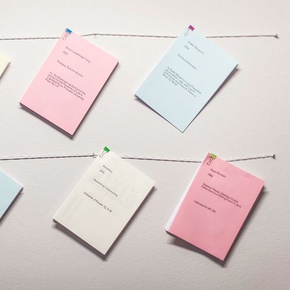
A Certain Aesthetic
Walid Siti in conversation with Nat Muller
Walid Siti's oeuvre draws heavily on his lived experience of exile and loss, yet at first glance that is not apparent from his abstract landscapes and geometric and architectural structures. His work is characterised by a subtle, almost understated, poetics and politics of form. It is the sub-text of repression and conflict. In this conversation with Nat Muller, Siti reflects upon his practice as lived, through his experiences of his artistic training in Iraq in the 1970s.

Epic Painting
Dia Azzawi in conversation with Sheyma Buali
Across decades of political turmoil, Dia Azzawi has painted the situations across his native Iraq the wider Arab world. From his first engagement in demonstrations in support of Gamal Abdul Nasser's nationalization of the Suez Canal, through coups, massacres and occupation, Azzawi has reflected ideas on nationalism, isolation and the humanity of the arts in everyday life. In this interview, he speaks to Sheyma Buali about the effect of politics he witnessed on the content and style of his work.

Picturing the Homeland
Carole Alfarah in conversation with María Gómez López
Born in Damascus, Carole Alfarah left Syria in 2012 to settle in Spain. Since then, she has returned several times to her homeland. Her first solo show is Wa Habibi, at Casa Arabe, Madrid, an institution that aims to serve as meeting point between Spain and the Arab world. Divided in four parts, the show aims to bring audiences closer to Syria's layered histories through a variety of media. Here, Alfareh talks to María Gómez López, using the exhibition as point of departure.

Between Middle and East
JW Stella in conversation with Aimee Dawson
In this conversation with Aimee Dawson, curator JW Stella describes her experiences working between Asia and the Middle East, particularly South Korea and the Gulf region. As the International Associate Curator for Shanghai Duolun Museum of Modern Art and a regular contributor to Seoul Art Guide, Stella has worked to introduce contemporary art from the Middle East to a wider public in Asia and vice versa. For this reason, in her practice, Stella focuses on the complex issues of visually representing the idea of region-specific, collective cultures and identities.

We Are Sick, But We Are Alive
Haig Aivazian in conversation with Rayya Badran
Haig Aivazian's first solo exhibition in Beirut, I am Sick but I am Alive (Hastayim Yasiyorum) drew on the artist's research into the historical and contemporary manifestations of modal 'Oriental' music in Turkey. Focusing on the legacy of Turkish-Armenian oud master Udi Hrant Kenkulian (1901–1978), Aivazian presented drawing, film, and sculpture. In this conversation with Rayya Badran, Aivazian talks about historicity in relation to music and how it is reflected in the present, often in moments of silence.
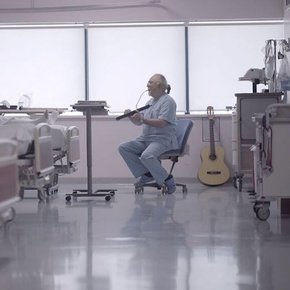
Reversing Power, Allowing Possibilities
Yael Bartana in conversation with Clelia Coussonnet
How much do political and social norms affect our behaviours and the definition of our priorities? This is a question Yael Bartana tests to the limit as an artist concerned with power relations and the way official narratives and images are constructed and internalized. In this conversation with Clelia Coussonet, Bartana considers history and society as the result of a tessellation of narratives. She also talks about countering normativity in public and intimate spheres, offering reflections that open a critical space for engaged debate.
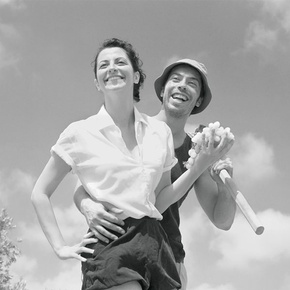
Dark Matters
Morehshin Allahyari in conversation with Hannah Gregory
In her own words, Morehshin Allahyari left Iran in 2007 to pursue 'self-exile over self-censorship'. Her work holds technology as 'a philosophical toolset' and 3D printing as a potential 'process for repairing history and memory'. In this conversation with Hannah Gregory, Allahyari discusses the foundations of her practice through an introduction to her new research project, which is rooted in refiguring Middle Eastern mythologies, and begins with the exhibition and video She Who Sees the Unknown, which Allahyari recently presented at New York's Transfer Gallery.

The Making of a Collective
MADRASSA Collective in conversation with Antonia Alampi
This conversation between MADRASSA Collective and Antonia Alampi reflects on the group's first co-curated exhibition, Something to Generate From, which ran from 17 June to 7 August 2016 at Kunsthal Aarhus, Denmark. They discuss curatorial approach and methodologies, and the challenges implied in the making of a collective composed of 8 people living in different countries but with a strong commitment and dedication to exploring the specifics of curatorial and artistic research in Africa and the Middle East.
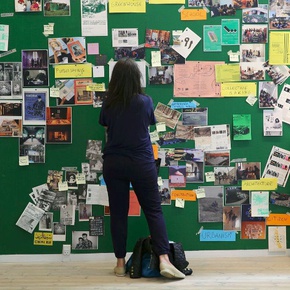
Politics in Practice
Younes Bouadi in conversation with Stephanie Bailey
Younes Bouadi is Head of Production and Research at Studio Jonas Staal. The studio runs an artistic and political organization called the New World Summit, for which Bouadi recently oversaw the construction of a parliament building in Rojava at the invitation of the Democratic Self-Administration of Rojava. Here, he talks to Ibraaz Senior Editor Stephanie Bailey about practice of politics.
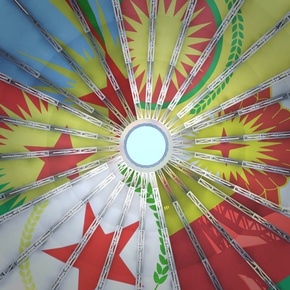
Capturing Evanescence
Rifat Chadirji and Balkis Sharara in conversation with Amin Alsaden
Amassed over several decades, Rifat Chadirji – one of the Middle East's most prominent modern architects – produced what could very well be the most comprehensive photographic record of Iraq in the second half of the twentieth century, covering various aspects of life in the country, from rituals, crafts, spaces, family and social life. Here, Chadirji and his wife and collaborator Balkis Sharara speak to Amin Alsaden about the conclusion of this project.
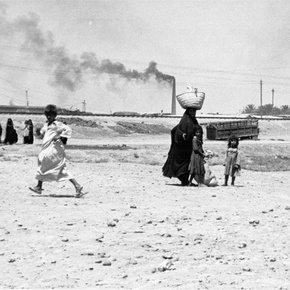
Kuwait Transformed
Farah Al-Nakib in conversation with Todd Reisz
Historian Farah Al-Nakib's new book, Kuwait Transformed: History of Oil and Urban Life, probes how much history can tell us about the country's past promises, its current quandaries, and its future potential. In this interview with architect Todd Reisz, Al-Nakib reveals how an urban writing of the Persian Gulf could, in turn, shape its future.

Speculations for Collective Transformations
Farah Saleh in conversation with Marianna Liosi
Archive material, testimonies and imagination are central elements in the practice of Palestinian choreographer and dancer Farah Saleh. Considering her body as an archive, Saleh talks to curator Marianna Liosi reflects on a wide range of issues through her work, from education and dissent to obedience and refusal, as well as the growing Islamization of society, openness towards the other, the activism of the artist as well as of the viewer, and how art can drive people to imagine collective transformations.
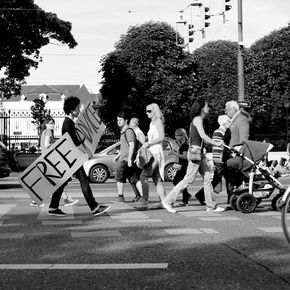
Information Acts
Navine G. Khan-Dossos in conversation with Stephanie Bailey
Navine G. Khan-Dossos uses painting to explore 'the algorithmic nature of the interconnected world we live in' by melding geometric abstraction with traditional aniconism of Islamic art, and the patterns underpinning digital life. Khan-Dossos elaborates on this research in this discussion with Ibraaz Senior Editor Stephanie Bailey, which starts with the artist's Ibraaz 010 project commission: an online PDF that forms the digital component of the artist's exhibition, Command: Print (2016), at NOME Gallery in Berlin.
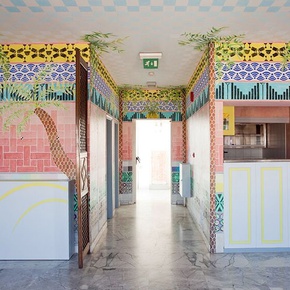
Family Ties
Mohssin Harraki in conversation with Karima Boudou
In this interview, artist Mohssin Harraki talks to Karima Boudou about the development of his practice over the past decade in relation to how his work explores the realities and peculiarities of everyday life. Using fine art techniques in installation, Harraki expounds upon genealogies, histories, and their impact on the present.
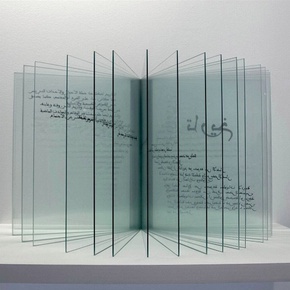
Film After Euphoria
Rasha Salti in conversation with Sheyma Buali
Rasha Salti talks about the range of films she has programmed as curator of the 2016 edition of Safar: A Celebration of Contemporary Arab Cinema, which will take place at the Institute of Contemporary Art in London in September 2016, as organized by The Arab British Centre. Reflecting on cinema released in 2015 and 2016, and thus after the 2011 so-called Arab Spring, Salti discusses the agency of filmmaking in the context of Arab cinema, and ideas of democratization and empowerment that are embedded within such processes.
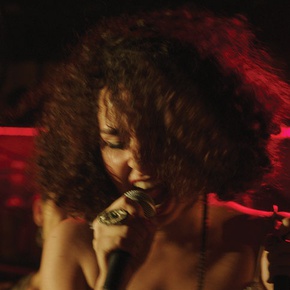
Still (the) Barbarians
Koyo Kouoh in conversation with Stephanie Bailey
'Still (the) Barbarians', this year's EVA International biennial exhibition in Limerick, Ireland, is a reminder of the country's postcolonial history in this centenary year of the 1916 Easter Rising. Curator Koyo Kouoh has taken this historical event as a starting point from which to 'examine the relationships between the various forms of mental, physical and institutional decolonization across the world in comparison to Ireland as the primary testing territory of Western colonization systems before their expansion to the global map'. Here, Kouoh speaks to Ibraaz Senior Editor Stephanie Bailey.
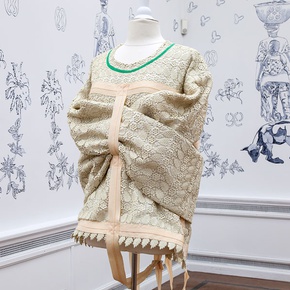
Shooting What is Missing
Hamza Halloubi in conversation with Natasha Hoare
The work of Tangiers-born, Moroccan artist Hamza Halloubi defies characterization and yet at the heart of it lies a specific vision of place and history, the paradoxical failure and success of image as mediation. His work spans video, installation and painting, most recently in exhibition at the EYE Film Institute, Amsterdam, and Du Pont Museum, Tilburg, and through his current residency at the Rijksakademie. Here, Halloubi speaks to Natasha Hoare.

Revisiting Internationalists
Fadi Bardawil in conversation with Zeynep Oz
In February 2016, Zeynep Oz organized a series of talks and screenings at SALT Galata, in collaboraiton with Fol Cinema, titled 'Greatest Common Factor', and which asked participants to reconsider moments of political hope, uncertainty and disillusionment through the cinema of the 1970s. Fadi Bardawil's talk discussed the rise of the 'New Left' in the Arab world.
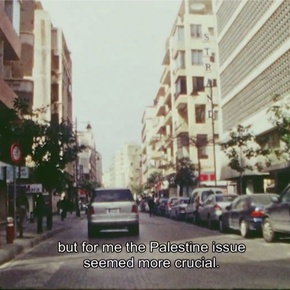
The Outsider
Mario Rizzi in conversation with Cristiana Perrella
Mario Rizzi's latest film, The Outsider (2015) delves into the social contract established in the Gezi community and the new forms of public agency explored after Gezi. It focuses on the group dynamics and narratives within three civil movements: an environmentalist group, a non-violent occupation protecting an historical Armenian orphanage, and Istanbul's LGBTI community, which acquired a higher social visibility after Gezi. Here, Rizzi speaks to Cristiana Perrella about his influences.
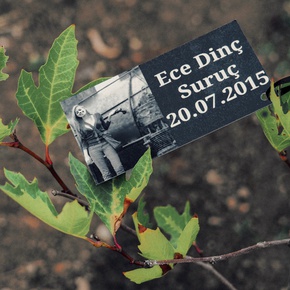
Art in the Time of the Anthropocene
Nora Razian, Nataša Petrešin Bachelez, and Angela Harutyunyan in conversation, with a contribution from Natasha Gasparian
Does the concept of the 'anthropocene' arise from, and capture, the historical material conditions of the contemporary world or is it another fleeting art historical trend? Writer, editor and educator Angela Harutyunyan speaks to curators Nora Razian and Nataša Petrešin Bachelez, with Natasha Gasparian, on the topic – and in specific relation to their project Let's Talk About the Weather: Art and Ecology in a Time of Crisis, which opens at the Sursock Museum, Beirut, in July 2016
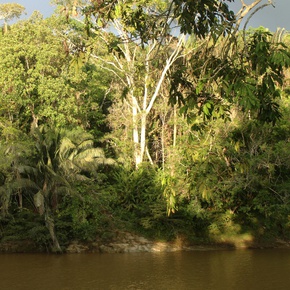
The Tentmakers of Cairo
Kim Beamish in conversation with Sam Bowker
The Tentmakers of Cairo (2016) is a feature-length documentary that situates Egypt's post-2011 political landscape through the perspectives of a unique community of textile artists in Cairo. Directed by Kim Beamish – who here speaks to Sam Bowker – over the course of three years, the film documents the interactions of the tentmakers with local, national, and international narratives, blending news media and authentic dialogue with the visual and cultural complexity of Khayamiya, or Egyptian Tentmaker Applique.
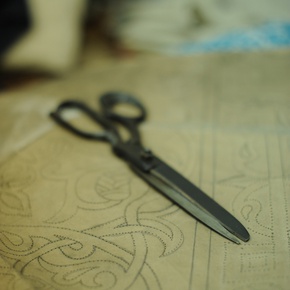
On Logical Revolts
Louis Henderson in conversation with Amira Gad
Amira Gad speaks to filmmaker Louis Henderson about his 'allegory of revolution', the work Logical Revolts (2012), a 42-minute film in search of the traces of Egyptian civilian resistance against colonial and military oppression, from 1952–2012. Intrigued by a possible connection to the 'Arab Spring' of 2011, Henderson travelled to Egypt to uncover some truths about an annotated UN-commissioned script he uncovered and, in the process, reflects on the 2011 revolution and the historical events that led up to it. Logical Revolts is an archaeology of 25 January 1952 to 25 January 2012, revealing the stratigraphic layers that build up from the rubble of history.
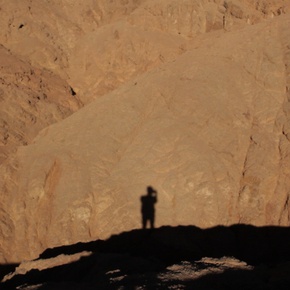
The Time is Out of Joint
Tarek Abou El Fetouh in conversation with Stephanie Bailey
In this interview Tarek Abou El Fetouh discusses Time is Out of Joint, an exhibition that presents a history of corresponding temporalities that recalls both our inability to deal with the complexities of our time, and the necessity to draw connections between us beyond defined 'regions'.
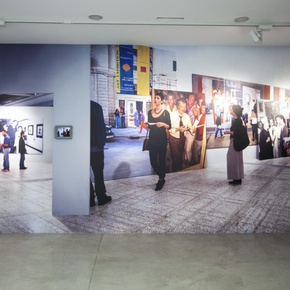
Hiding Out In My Own Place
Nida Sinnokrot in conversation with Natasha Hoare
'What does it mean to be making art within the fulcrum of occupation and amidst precarious state security?' asks Natasha Hoare, in this conversation with Nida Sinnokrot – the Algerian-born artist moved with his family to Texas as a young boy, and currently lives in Palestine. 'For many years,' writes Hoare, '(Sinnokrot) has constructed his practice around ways of re-envisioning modes of representation, particularly in cinema and film, and commenting on the ways in which narrative structures are built through image...'

On Performing in a Hermetic Context
Nathan Witt in conversation with Amira Gad
Nathan Witt's work is primarily interested in identifying value and meaning through the dissemination of visual culture and learned history. Since 2002, Witt has produced a varied body of work that includes texts as specific counter-images and counter-objects, focusing on the integrity of the motive and its manipulation. In this conversation with Amira Gad, Witt discusses a range of his research-performance installations, notably within the context of the history of the Israel-Palestine conflict.
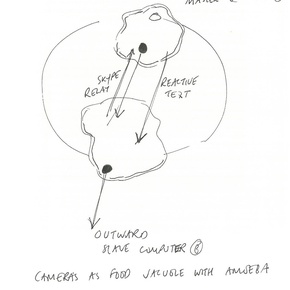
Not New Now
Reem Fadda in conversation with Fawz Kabra
This conversation between Fawz Kabra and Reem Fadda centres around Not New Now, the sixth Marrakech Biennale. Curated by Fadda, she approaches the term 'contemporary art' critically, opting instead for the notion of 'living art', which, as she explained during the opening, 'comprises art that is now; about the living, as in to live, the rights of people, society, and politics. It harnesses the contemporary that is essential to the present day. It is active.'

Present Continuous
Christine Tohme in conversation with Rachel Dedman
In this interview, Rachel Dedman speaks to Christine Tohme, founder and Director of Ashkal Alwan, Beirut, about the seventh iteration of Home Works Forum. Tohme speaks about the methodologies, practices and external forces that shape an institution from within and without, and also discusses her approach to the Sharjah Biennale 13, which she is curating in 2017.

Spaces of Agency
Maya Zbib in conversation with Amal Khalaf
Zoukak Theatre Collective and Cultural Association was established in Beirut in 2006, and has worked to find new ways of collective creation since its inception. Drawing from an understanding of theatre as collective work done by diverse individuals, Zoukak has applied theatre in various situations, finding ways to connect social interventions with artistic investigations. In this conversation between Ibraaz Projects Editor Amal Khalaf and Maya Zbib, a founding member of Zoukak, the two talk about working with marginalised communities and broadening Lebanese audiences for performance.

Hero to Hero
Sohrab Kashani in conversation with Taus Makhacheva
In this essay, Taus Makhacheva and Sohrab Kashani and Super Sohrab and Super Taus meet to discuss the idea of artistic resistance in public, for Sohrab in Iran, and for Makhacheva in Russia. Their conversation stretches between their own artistic practices, about how forms of public performance can engender a sense of 'invisible heroism' within the everyday, and about how each has their own set of indvidual superpowers.

Laughing Out Loud
Meriem Bennani in conversation with Myriam Ben Salah
In this conversation between curator Myriam Ben Salah and artist Meriem Bennani, Ben Salah discusses opening up new spaces for artistic models and the contemporary cross-disciplinary languages of art-making. Bennani responds in particular reference to her work Farduous Funjab (2015), a reality show spoof about a fictiious hijab designer.
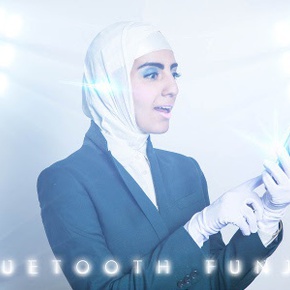
Progressive Roots
Sussan Deyhim in conversation with Sheyma Buali
Sussan Deyhim talks about her performance education in Iran, her development in bringing together spiritual folk and progressive experimentation, and the varied projects she creates today.
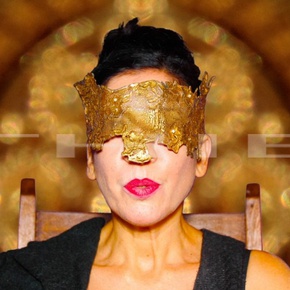
Homeland(s)
Hrair Sarkissian in conversation with Raed Yassin
In this conversation between artists and close friends Raed Yassin and Hrair Sarkissian, Sarkissian discusses his recent exhibition at the Mosaic Rooms in London, and recent evolutions in his work; to the artists' heritage, and the problem of the 'name'; to identity and language, and its relationship to contemporary art.
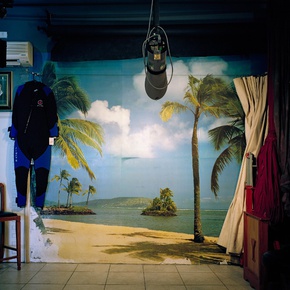
The Personal and the Political All at Once
Adham Hafez in conversation with Suzy Halajian
In this converstation between curator Suzy Halajian and artist Adham Hafez covers the complexities of performance (specifically, dance) as way of reordering both historical facts and the geopolitical intricacies of today in order to to understand the concept of postcoloniality as it will occur in the future.
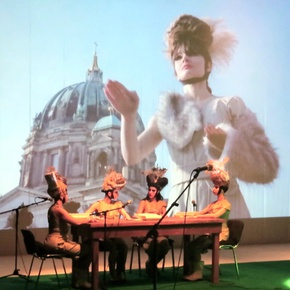
The Performativity of Emotions
Abdullah Al-Mutairi in conversation with Sarah Abu Abdallah
What does it mean to be an artist in the Gulf today? What are the politics of representation and presentation of art that surround artistic production? In this conversation, artists Abdullah Al-Mutairi and Sarah Abu Abdallah discuss the problems that they commonly face in their artistic careers, from the misinterpretation of their works to their positioning as 'spokespeople' for their region; the misunderstanding and stereotyping of the Gulf itself; and the expectations placed upon their production and subjects of interest.
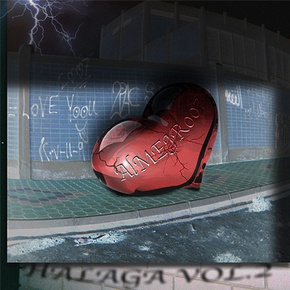
The Islamic Sonic-Social
Seth Ayyaz in conversation with Sheyma Buali
This interview examines aspects of the work of sound artist, composer and theorist, Seth Ayyaz. The interview is broken into three parts. First, Ibraaz Commissioning Editor Sheyma Buali breaks down the artist's ideas on 'the Islamic sonic-social.' Part two of the interview is a short discussion between Ayyaz and artist and writer Lisa Skuret. The final section is an edited transcript of a panel discussion that took place as part of Ayyaz's week-long exhibition as part of the fig-2 50-week series at the Institute of Contemporary Art in London.
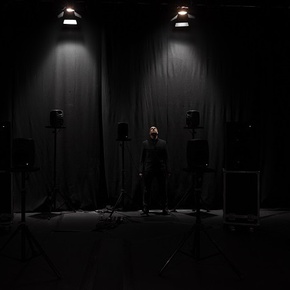
Performative States
Coco Fusco in conversation with Stephanie Bailey
Cuban-American interdisciplinary artist and writer Coco Fusco talks about her new book Dangerous Moves: Performance and Politics in Cuba (2015), which analyses performance art and political engagement in in post-revolutionary Cuba. Fusco discusses how performance art can be defined; why performance art has long been marginalized in Cuban society; and how the specific history of performance art in Cuba might resonate with other schools of performance or regions in which performance has been enacted today.
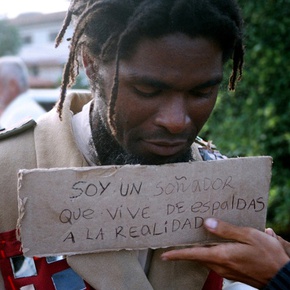
Acoustic Encounters
Magdi Mostafa in conversation with Clelia Coussonnet
In this conversation, which took place in September 2015 during the Biennale de Lyon, Magdi Mostafa addresses sound's capacity to unearth lost feelings and images, and its potential to create spiritual experiences within exhibitionary frames that tap into the tactics of performance. Mostafa reflects on how uncertainty and chemistry play a vital role in his practice, enabling permeation between himself, the public, and sound.

Image Appropriation
Urok Shirhan in Conversation with Stephanie Bailey
This interview with Urok Shirhan is framed around a performance staged by the artist in 2013 as part of Home Works 6, and Matthias Lilienthal's X-Apartments project, in which Shirhan offered visitors the chance to obtain 'Membership to the Occupation of Iraq'.
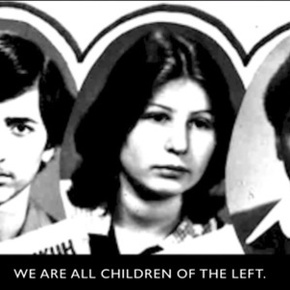
The Right to Shelter
Helene Kazan in conversation with Amal Khalaf
'At points during the performance lecture I am forced to fight with the material that is set to run as I begin – as it intervenes I lose control in these moments and the audience, observing these mistakes, engage closely in that moment...' In this interview with Ibraaz Commissioning Editor Amal Khalaf, Helene Kazan discusses her projects, including recent work Engineering Shelter (2015), in which she uses rehearsal and re-enactment to examine histories of domestic space.
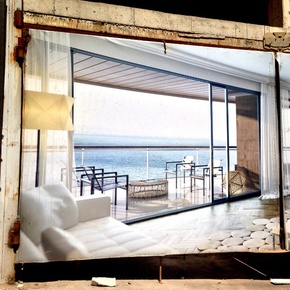
Event Horizon
Eric Baudelaire in conversation with Anthony Downey
Visual artist and filmmaker Eric Baudelaire talks to Ibraaz Editor-in-Chief Anthony Downey about the themes of disjunction, the real, and the representation of the 'event' in his work. Tracing the development of his career from the social sciences to the field of art, as inspired by his time in the de facto state of Abkhazia, Baudelaire describes the convergence of his different interests in sound, image, oral history, and the unpacking and problematizing of historical narratives.

Role Play
Oreet Ashery in conversation with Amal Khalaf
Confronting social, ideological and gender constructions, Oreet Ashery's politically engaged, complex, and participatory work always occupies a contested socio-political territory, be it interrogations into migration, religion, feminism, queer politics, or class. In this interview with Ibraaz Commissioning Editor Amal Khalaf, Ashery discusses moving away from one body and voice to works with many bodies and many voices.

History All Wrapped Up
Gülsün Karamustafa in conversation with Basak Senova
In this conversation with Basak Senova, Gülsün Karamustafa discusses her recent solo exhibition Swaddling the Baby at Villa Romana, Florence. Karamustafa explains the genesis of her work, initially inspired by a trip to Florence in 1969. Karamustafa explains how her work traces the migratory patterns of some of the most vulnerable ethnic identities in modern history through the familiar tradition of swaddling.
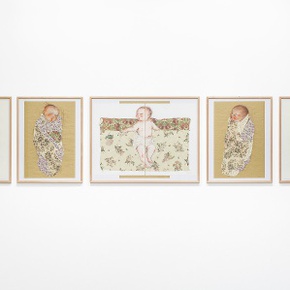
A Letter’s Discourse
Yazan Khalili and Lara Khaldi in conversation with Natasha Hoare
Natasha Hoare speaks to artist Yazan Khalili and curator Lara Khaldi about their collaborative practice: performance lectures that draw together image, text, archive, film and sound through the epistolatory form. Often, their chains of communication form the public manifestation of shared research. Together, they create narratives that blend fact and fiction, temporality and geography, the intimate and the political.
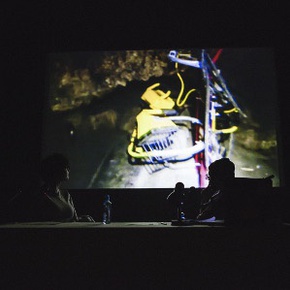
Action Piece
Reza Aramesh in conversation with Lara Atallah
While Reza Aramesh isn't a performance artist in essence, there is an inherent performative quality to his work. Known for a practice that looks into images of violence and the viewers' relationship to them, Aramesh has been creating bodies of work titled and numbered as 'Actions', according to events that took place at specific times in war torn areas. In this interview with Lara Atallah, Reza Aramesh discusses his 'Action' works in the context of archiving human suffering, highlighting the importance of questioning fiction and reality through his usage of the archive.
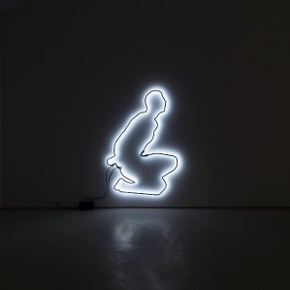
Performative Resonances
Hiwa K in conversation with Anthony Downey and Amal Khalaf
Hiwa K's work fundamentally interrogates the position of the artist, formal education systems and the resonances, both literally and aurally, of historical events. In this far ranging conversation between the artist, Anthony Downey and Amal Khalaf, Hiwa reflects upon his most recent work The Bell (2007–2015) and previous performances, highlighting how his use of sound produces performative acts and explaining how he utilizes humour to reinvigorate the friction of reality.

Past Disquiet
Rasha Salti and Kristine Khouri in conversation with Samah Hijawi
This interview follows the opening of Past Disquiet: Narratives and Ghosts from the International Exhibition for Palestine 1978 at MACBA Barcelona in February 2015, an archival and documentary show that takes the International Exhibition for Palestine of 1978 (organized by the Palestinian Liberation Organization (PLO) in Beirut) as the starting point for an extensive research project. Here, Samah Hijawi talks to the exhibition's curators, Rasha Salti and Kristine Khouri.

Place, Space and Purpose
Lina Majdalanie in conversation with Göksu Kunak
In this interview with Göksu Kunak, Lina Majdalanie (previously known as Lina Saneh) challenges the concepts of 'East' and 'West' as dichotomies around which various elements of performance are situated – as opposing, unrelated histories within performance art as a field; as defined differing modes and styles; and as distinct, audience-specific perspectives.

Theatre of the Present
Rabih Mroué in conversation with Göksu Kunak
How does theatre enact the compression of time, while mediating a kind of immediacy not found, specifically, in film or video works? In this interview with Göksu Kunak, Rabih Mroué addresses this and other points, including the role of audiences, time, and context.

Enacting the Void
Fayçal Baghriche in conversation with Sheyma Buali
A reoccurring theme in Fayçal Bagriche's practice is the question of what one sees versus what is actually there; he reinterprets this by enacting his condition in various roles: whether as an artist, a performer or an actor. Here, Ibraaz Channel Editor, Sheyma Buali, speaks to him about enacting these various contexts and conditions, leading to ways in which his practice, and performance art in general, can be defined.
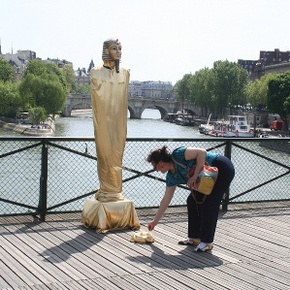
Doing Performance
Hassan Sharif in conversation with Nujoom Al Ghanem
In this interview, filmmaker Nujoom Al Ghanem speaks with Hassan Sharif about the question of performance art and its histories from the perspective of the Gulf. The conversation starts in Europe, before returning to the Middle East and Sharif's work to provoke a discourse local to the UAE. A key moment emerges in Sharif's life – when he began engaging in performance – and expands to a consideration of what performance is today. What emerges is a framework with which to consider the question of Ibraaz Platform 009.

Accumulative Processes
Marwa Arsanios in conversation with Fawz Kabra
Marwa Arsanios' practice involves performance, installation, film, animation, and publications. In this interview, Arsanios and Fawz Kabra touch upon several previous projects and connect points of view on feminism, Al-Hilal magazine publications in the 50s–60s, performance, and destroyed bodies and architectures that mark the remnants of violence induced on the human body by modernization.
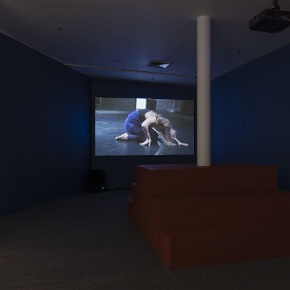
The Great Journey
Lidia Al-Qattan in conversation with Monira Al Qadiri
Born in Italy as Lidia Guiseppe Scagnolari, Lidia Al-Qattan lived through the cruelties of Christian boarding schools and 'El Duce' Mussolini's Italy before moving to Kuwait in 1960, over half a century ago. She witnessed the rapid modernization of Kuwait from an empty desert-scape to one of the wealthiest countries in the world. In 1966, upon looking at the shiny reflections of a mirror her daughter had broken, Al-Qattan began to cover her entire house in mirror mosaics. In this interview, Monira Al Qadiri discusses this life project and its several phases.

A Century of Centuries
November Paynter and Didem Pekün in conversation with Basak Senova
A Century of Centuries is the cumulative end result of a research process based on dialogues with a range of international artists at SALT Beyoğlu in Istanbul. The exhibition gathers intersected positions and artistic responses artists are presented within a framework that considers: 'transformative moments, traumatic experiences and social transitions of the past that continue to resonate in and shape the present.' Exhibition curator November Paynter's research process started with artist Didem Pekün, and a lingering dialogue between them. In this interview, Basak Senova talks to November Paynter and Didem Pekün about the development of A Century of Centuries.
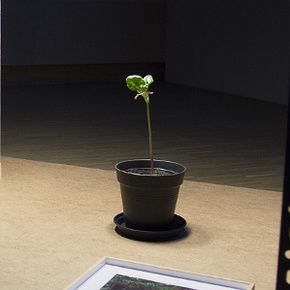
A Cartography of Events
Vangelis Vlahos in conversation with Stephanie Bailey
Vangelis Vlahos's work mines archives so as to produce geopolitical perspectives of historical events. In this interview with Ibraaz Managing Editor Stephanie Bailey, Vlahos discusses his work in archival research and its delineation through into specific historical frames. Through this, he considers Greece's role not as a peripheral nation, but as a nodal point through which global flows pass.
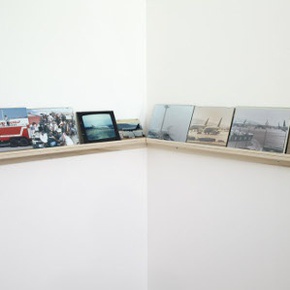
A New World Summit
Jonas Staal in conversation with Stephanie Bailey
The New World Summit is an artistic and political organization dedicated to providing 'alternative parliaments' by hosting political groups that have been excluded from democracy. In this interview, Ibraaz Managing Editor Stephanie Bailey talks to Jonas Staal, founder of The New World Summit, to discuss the project's origins, present, and aims for the future.
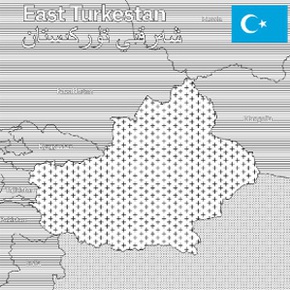
From Central Asia to the Caucasus
Leeza Ahmady in conversation with Taus Makhacheva
In this encounter, curator Leeza Ahmady and artist Taus Makhacheva unearth subtle links in their respective practices and in between the regions they navigate, or dismantle. Taking the form of an online 'studio visit', the discussion below took place over a period of eight weeks. What emerged was an ambitious and wide-reaching conversation that took in a range of topics, from Russian wedding banquets, to body builders and male wrestlers, to the history of object-making in the Caucasus.

Global Art Forum 9
Sheyma Buali in conversation with Turi Munthe and Sultan Sooud Al-Qassemi
In this interview, Global Art Forum 9 Co-Directors Turi Munthe and Sultan Sooud Al-Qassemi discuss the concept around the 2015 Global Art Forum 9 (GAF), titled 'Download: Update?', with Ibraaz Commissioning Editor Sheyma Buali.
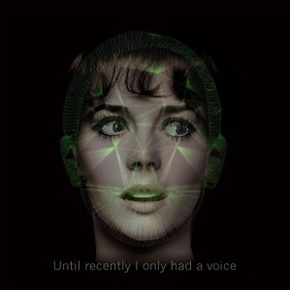
Mirrors for Princes
Anthony Downey and Beatrix Ruf in conversation with Slavs and Tatars
In this extensive interview, taken from the book Mirrors for Princes: Both Sides of the Tongue (2015), Anthony Downey and Beatrix Ruf talk to Slavs and Tatars about the history of the self-help genre. A form of political writing that advises rulers on state matters, 'mirrors for princes' were concerned with giving both the secular and spiritual guidance.Although the most commonly known example of this genre is Niccolò Machiavelli's political treatise The Prince, published in 1532, other versions exists, including the eleventh century Kutadgu Bilig. The most remarkable thing about this book, apart from its ontology,is the fact that the advice it offers – on matters of justice, fortune, wisdom and contentment – is intended for all citizens and not just for rulers or kings. Using this concept as a framework, this discussion examines issues of artistry and interpretive exhibition-making, and the polemical issues that surround them.

No Boundaries
Aikaterini Gegisian in conversation with Stephanie Bailey
In this conversation, Aikaterini Gegisian talks to Stephanie Bailey about her Ibraaz 008 project it is small, we like it this way, a fictional photo reportage comprised of image fragments found in lifestyle USA magazines of the sixties in articles that focus on the Middle East, North Africa and the Global South. The discussion expands into Gegisian's practice as a whole, exploring the way national and regional identities have been constructed through popular culture, often by those who exist outside the regions in question.

Alternate Geographies
Sumesh Sharma in conversation with Amanprit Sandhu
This interview between curator Amanprit Sandhu and Sumesh Sharma from the Mumbai-based collective Clark House Initiative considers the cultural history of Indian cinema, and the use of DIY filmmaking techniques in reimagining the 'Global South'. Discussing previous projects, and Ibraaz's online commission Incidents of the Paradoxical Gaze, this interview is accompanied by a 008 project by commissioned artist and Clark House member Yogesh Barve.
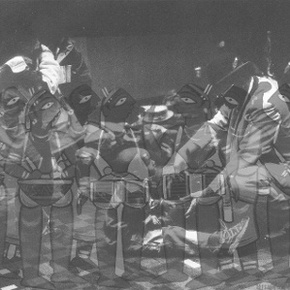
Aquatic Memory
Hera Büyüktaşçıyan in conversation with Basak Senova
Hera Büyüktaşçıyan is a storyteller who processes extensive research on historical and cultural narratives mostly based on her Greek-Armenian roots that manifest in long-term projects. In this interview, Basak Senova talks to Büyüktaşçıyan about her artistic approach while considering the topics that hover around Büyüktaşçıyan's projects with a focus on her recent work, The Recovery of an Early Water (2014), which was developed for the Jerusalem Show VII: Fractures. The Recovery of an Early Water was based on reanimating a historical water supply of the old city so as to create a public space by providing access to a closed territory and forgotten memory.
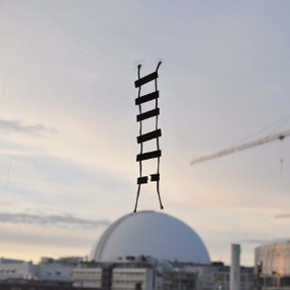
Memory Montage
Uriel Orlow in conversation with Omar Kholeif
In this interview Omar Kholeif talks to Uriel Orlow about his recent project for Ibraaz Platform 008: 2922 Days (2014), a culmination of two earlier works that uncover the undocumented eight-year entrapment of 14 cargo ships in the Suez Canal at the outbreak of the 1967 war between Israel and Egypt, Jordan and Syria. Orlow explains how his discovery of this un-authored historical moment developed into a project that connected this 'time-capsule' with other events taking place across the world during this period.
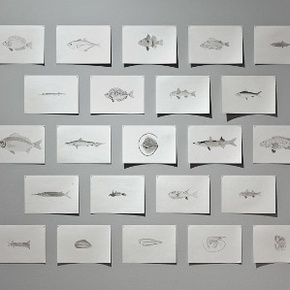
Art After Identity Politics
Nav Haq in conversation with Stephanie Bailey
Don't You Know Who I Am? Art After Identity Politics is an exhibition organized by the Museum of Contemporary Art Antwerp (M HKA) within the framework of 'The Uses of Art', a project by the European museum confederation L'Internationale, which proposes 'a space for art within a non-hierarchical and decentralized internationalism, based on the value of difference and horizontal exchange among a constellation of cultural agents, locally rooted and globally connected. Exhibition co-curator Nav Haq talks to Ibraaz Senior Editor Stephanie Bailey about the rationale behind an exhibition that considers how identity is formed and expressed in the twenty-first century.
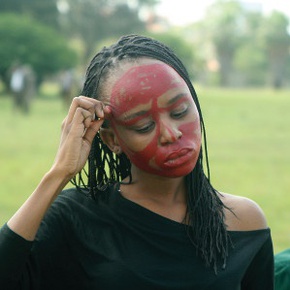
States of Suspension
Youmna Chlala in conversation with Fawz Kabra
Youmna Chlala is an artist and writer living and working in New York whose writing, poetry and art weave in and out of installation, video, sculpture, or performance works. Chance plays a key role in Chlala's practice, as she creates situations that are left to coincidence and happenstance, whether it is work that feeds on personal narratives or the artist's observations of a context from afar, an intervention in space, or a project that brings together actors to perform unscripted roles. In this interview, Chlala talks about her body of work, and particularly her recent project, Notes for Leaving and Arriving, produced for Ibraaz Platform 008 using Super 8 images and text. Chlala discusses states of suspension and the cyclical moments that occur from constant movement, and how light reveals the interstitial spaces between text and images that leave us suspended in various places.
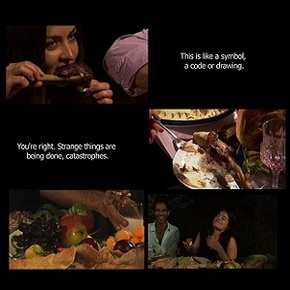
On Sovereignty
Amar Kanwar in conversation with Stephanie Bailey
In this interview, Stephanie Bailey talks to artist and filmmaker Amar Kanwar about The Sovereign Forest (2011– ), an ongoing project that is comprised of films, books, sculptures and photographs, presented partly as an archival installation that continues to expand and grow. The project portrays the exhaustive resistance movements that have responded to abuses of power in India, particularly in the region of Odisha (formerly Orissa).

Is This about Culture?
Leung Chi Wo in conversation with Robin Peckham
In this interview, Hong Kong artist Leung Chi Wo discusses the dynamics that fed into the production of So I don't really know sometimes if it's because of culture (2012), a 4-channel audiovisual video installation exploring the notion of diasporas through a post-colonial perspective that takes into account views from both Hong Kong and Morocco. The project began as a commission for the 4th Marrakech Biennale in 2012, and later became a publication that presented the extensive research Leung conducted as part of the work's conceptualization, which formed after Leung visited Marrakech and returned to Hong Kong, where he met Moroccan-born Assia and French-born Saloua.
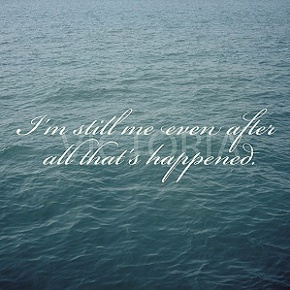
Forensic Transgressions
Maryam Monalisa Gharavi in conversation with Mirene Arsanios
Maryam Monalisa Gharavi's work gathers the complexity and nuance often present in histories of migration and displacement – histories that force a particular attention to the conditions and uses of language, its ideology, and its poetry – and she approaches these issues, directly or indirectly, through writing and visual art. Since 2009, she has maintained a blog called 'South/South', which she describes as a place allowing for an extended questioning and critique of the dominance of western universalism and the contemplation of the multiplicity of 'Souths'.

A Big Bang Theory
Eric Van Hove in conversation with Natasha Hoare
Eric Van Hove's socio-economic sculpture V12 Laraki (2013) is an exact replica of the Mercedes-Benz V12 engine: the product of thousands of hours of labour by Moroccan craftsmen Van Hove sought out from across diverse quarters of Marrakech, and who worked to recreate 465 pieces of the engine in 53 different hand crafts. V12 Laraki is a work that speaks of time, the value of labour, cross-cultural exchange, and a deeply Moroccan aesthetic combined with a German engineering exactitude. In this interview, Van Hove discusses the project in depth, and reflects on its outcomes.
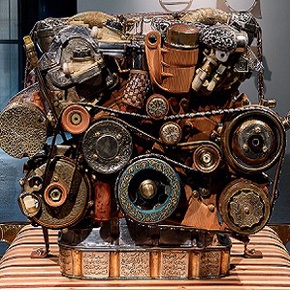
Writing by Example
Meriç Algün Ringborg in conversation with Nora Razian
Meriç Algün Ringborg talks to Nora Razian about her most recent work A World of Blind Chance (2014) and her ongoing work The Library of Unborrowed Books (2012) most recently shown at the 12 Bienal de Cuenca, the 19th Biennale of Sydney and Art in General in New York. Meriç's work inherently challenges the privilege of language and expression and through this explores notions of originality and individuality in authorship, the role of the artist and the creative act.
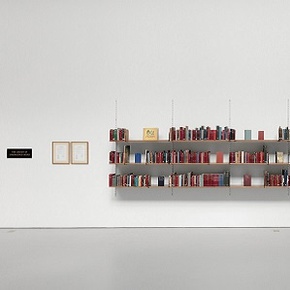
When Energy Becomes Form
Stefano Rabolli Pansera in conversation with Stephanie Bailey
Originally developed by Stefano Rabolli Pansera in 2009 as a trans-disciplinary research platform, Beyond Entropy is an independent collaborative practice that operates globally in association with public organizations, private institutions and governmental agencies. Since 2012, Beyond Entropy has operated not only in Europe, but also in the Mediterranean and Africa, engaging in projects that use energy as 'a conceptual device used to conceive new architectural strategies that reveal space not as a fixed, measurable entity but as a temporal coalescence of continuously unfolding forces.' In this interview, Pansera contemplates – and problematizes – the themes of Platform 008.

My Sister Who Travels
Martina Caruso in conversation with Sheyma Buali
In this interview, Sheyma Buali speaks with Martina Caruso about the exhibition My Sister Who Travels (The Mosaic Rooms, 18 July–30 August 2014), and which featured six contemporary artists, Corinne Silva, Halida Boughriet, Jananne Al-Ani, Noor Abed, Paola Yacoub and Ursula Schulz-Dornburg, presented alongside archival images by Victorian archaeologist Esther Van Deman. The exhibition considered the Mediterranean as a landscape with liquid borders, and unpacked issues of movement versus stagnation, history and the contemporary, alongside the visible and the invisible.
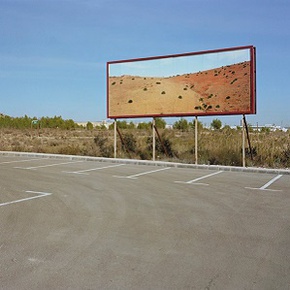
From the Ground Up
Discussing arts infrastructure in Tehran
This brief conversation with curators Azar Mahmoudian and Nazila Noebashari centres around the question of infrastructure, or lack thereof, in Iran and more specifically, Tehran. Topics of discussion include the degradation of relationships between Iranian cultural institutions and local artists networks; the question of what can be done to rebuild them or to organize outside of them; and the tension between the relative isolation of Tehran from the global flow of artists, artworks and ideas against sustained interest in multiple forms of Iranian cultural production outside of the country.
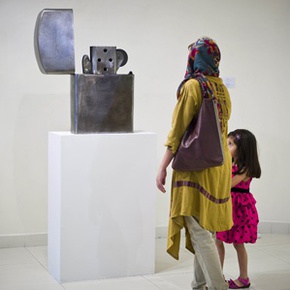
Transmission Systems
Raed Yassin in conversation with Stephanie Bailey
In this conversation with Ibraaz Managing Editor Stephanie Bailey, Raed Yassin talks about the way his work encourages audiences and participants to become actively engaged in the interpretation and dissemination of an artwork and the ideas that feed into its construction.
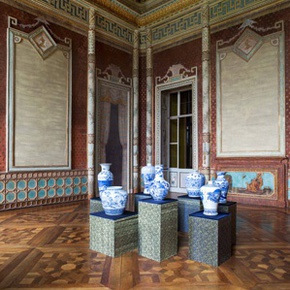
Visualizing Displacement
Foundland in conversation with Nat Muller
Foundland’s Lauren Alexander and Ghalia Elsrakbi talk to Nat Muller about their new exhibition Escape Routes and Waiting Rooms that recently opened at ISCP (International Studio and Curatorial Programme). The last few years Foundland’s practice has focused primarily on analysing stories, images and social media that come our of war-struck Syria. In their current show they investigate personal narratives of Syrian displacement and migration through domestic tropes. Foundland are currently the first artists-in-residence at ISCP supported by Edge of Arabia in partnership with Art Jameel for artists from the Middle East.
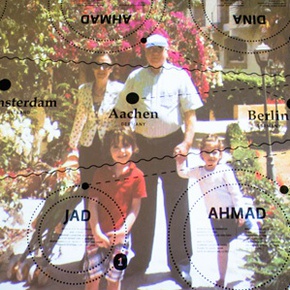
Technologies of History
Jananne Al-Ani in conversation with Nat Muller
In this interview with editorial correspondent Nat Muller, artist Jananne Al-Ani discusses how representations of the body figure throughout her work and how orientalist depictions of the Middle Eastern landscape, through literature, photography and film, continue to dominate our view of the region to this day. In her work Al-Ani focuses on lens-based media, and most recently on aerial surveillance photography. She explains how these technologies not only condition the dynamics of viewing, but also how she as an artist can draw on these technologies to explore – and challenge – memory and history.
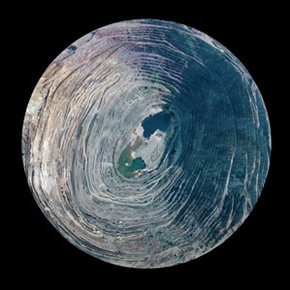
Positional Views
Eungie Joo in conversation with Stephanie Bailey
Eungie Joo programmed the Sharjah Art Foundation's 2014 March Meeting and was recently appointed Curator of Sharjah Biennial 12, to open in 2015. In this interview with Ibraaz Senior Editor Stephanie Bailey, Joo speaks of her vision for SB12 to contemplate how artists' positions help to consider new possibilities for social organization.
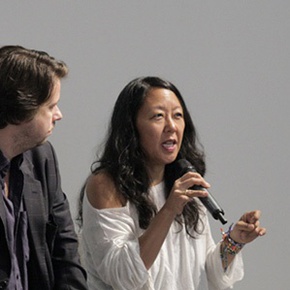
A Hybrid Model
Antonia Carver in conversation with Omar Kholeif
Ibraaz Senior Editor Omar Kholeif talks to Antonia Carver, director of Art Dubai, about the changing nature of institutional infrastructures in the Gulf. In this conversation, they discuss the social contexts of the art world, and whether the model of the art fair provides a different perspective on modernisation in an increasingly global art world.
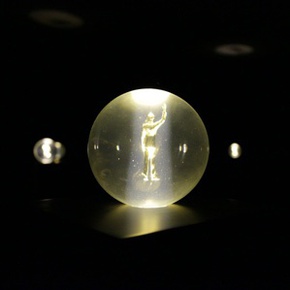
Time Over Development
Hisham Al-Madhloum in conversation with Stephanie Bailey
In this interview with Ibraaz Managing Editor Stephanie Bailey, Hisham Al-Madhloum, Directorate of Fine Art in Sharjah, explains the focus on arts engagement in Sharjah from the 1980s to the present day. Al-Madhloum discusses his experience of building culture in Sharjah, while explaining how the aim now, as it was in the past, is to establish a forum of fine arts for society that works to produce both cultural exhibitions and group shows, while focusing on social work.
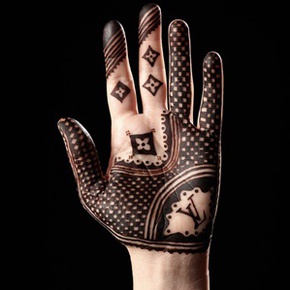
Collective Networking
Burak Arıkan in conversation with Basak Senova
Burak Arikan is a New York and Istanbul based artist working with complex networks. In this interview, Basak Senova, who has been working with Arikan for more than a decade in various projects and publications, talks to Arikan about how he perceives acts of collecting, knowledge mapping, data compling, interpretation and dissemination, along with the urban transformations and resistance in Turkey.
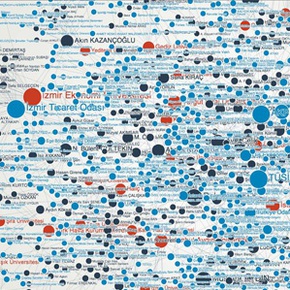
Flash Futures
Monira Al Qadiri in conversation with Stephanie Bailey
Monira Al Qadiri is concerned with reality and how it exposes itself in events that occur seemingly out of nowhere, like flashes of insight. In this interview with Ibraaz Managing Editor Stephanie Bailey, Qadiri explains how economy, conflict, power and metaphysical values play a role not only in the configuration of cultural institutions within the Gulf, but also in the configurations of culture in general.

Emergent Cinema
Ahd in conversation with Sheyma Buali
Ahd's directorial debut, in which she also starred, The Shoemaker (2009), premiered at the Dubai International Film Festival in 2009. Settled in Saudi and become a force of strength in the Gulf film scene. Her second directorial project, Sanctity (2012), was shot entirely in her hometown of Jeddah. Soon after that, she expanded her visibility in the ever-popular coming-of-age movie, Wadjda (2012). In this interview with Sheyma Buali, Ahd fleshes out issues of Saudi society as they are in three dimensions: the private, the public and the virtual; and how less-spoken issues can be dealt publicly with on the movie screen.
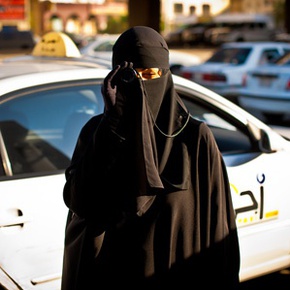
The Art of Resonance
Tarek Atoui in conversation with Stephanie Bailey
Tarek Atoui's artistic practice engages with sound as a force for communion and interrogation. He does this by building new software and specializes in creating computer tools for interdisciplinary art forms and youth education.In this interview, Atoui discusses the way his work has evolved since 2008, and how it has moved towards working with audiences.
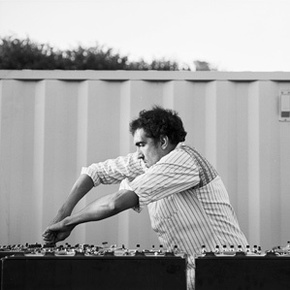
Free Expression
The Arab Digital Expression Foundation in conversation with Laura Cugusi
The Arab Digital Expression Foundation (ADEF) is an Arab platform that believes knowledge production and free expression contribute radically to building and strengthening engaged communities. Through an on-going process of collaboration between techies, artists, activists, youth leaders, educationalists and others, ADEF unfolded as a hub for knowledge production and sharing. This interview was conducted by Laura Cugusi with Ranwa Yehia, Maysara Abdulhaq and Kinda Hassan in March 2014 in Cairo, Egypt.
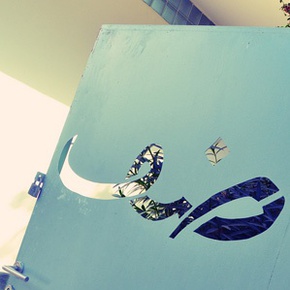
Video Channelling
Mai Elwakil in conversation with Daniella Rose King
Medrar.TV is a Cairo-based YouTube channel presenting digital content that documents contemporary visual art, sound and music events, exhibitions, talks, performances and interviews across Egypt and the Arabic-speaking world. In this interview with Daniella Rose King, Medrar.TV's co-founder and writer Mai Elwakil talks about the beginnings of Medrar.TV, the technological changes made to accommodate broader audiences and the founders' vision for enabling critical discussions and access to a plethora of contemporary cultural production.
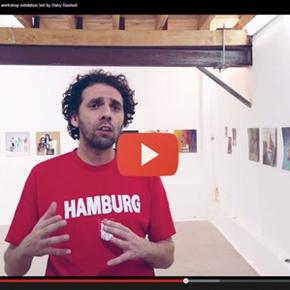
The State of a Nation
Larissa Sansour in conversation with Sheyma Buali
Larissa Sansour's work, mainly in the form of video art but also photography, installation, graphic novels and other media, has shifted a great deal from the beginning of her practice. Her short films answer to the Palestinian question and often incorporate themes surrounding food, humour and, increasingly lately, science fiction and visions of the future. In this interview, Sheyma Buali talks to Sansour about the role of historical knowledge, identity and the void of the present.
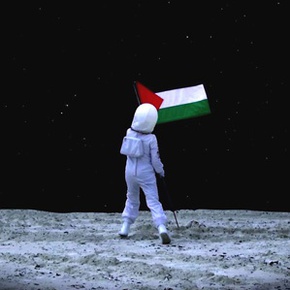
Who's Afraid of Religion?
Köken Ergun in conversation with Omar Kholeif
In this interview, artist Köken Ergun discusses contemporary art's relationship to religion. The conversation raises pertinent questions, including the issue of whether the institution of contemporary art is constructed as a secular one that ghettoizes particular artists who explore religion and ritual in their work.
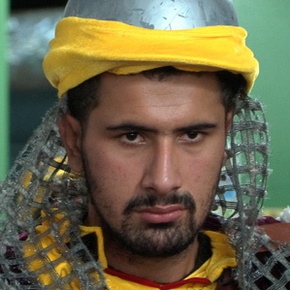
Re-Enacting Rupture
Lamia Joreige in conversation with Anthony Downey
Lamia Joreige writes: 'When excavating specific instances or locations, whether from the past, present, or projected future, intertemporal continuities and ruptures surface via what persists, what has vanished, and the promise of knowing and imagining inherent in both.' In this interview with Anthony Downey, Joreige discusses her works and the complex logic behind her investigations and cultural archeologies.
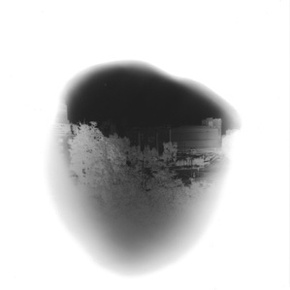
With Nail and Spring
Georgia Kotretsos in conversation with Stephanie Bailey
In this interview, Georgia Kotretsos talks to Stephanie Bailey about the one-month period, from January 2013 to December 2014, when she became artist-in-residence at L'appartement22, in Rabat, Morocco, an independent space for contemporary art that organizes exhibitions, workshops, and residency programs.

Building Mental Infrastructures
Ayşe Erkmen in conversation with Basak Senova
Ayşe Erkmen is an artist who is known for outstanding research-based, site-specific projects. Since the early 1980s, she has experimented with and implemented numerous formats, techniques and media by utilizing diverse verbal and visual languages. This interview with Basak Senova focuses on her recent two projects, bangbangbang (2013), which was presented at the 13th Istanbul Biennial in 2013, and Intervals (2013–14), which was presented at The Curve, Barbican Centre, London.
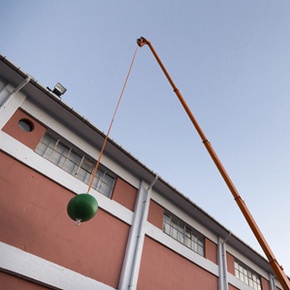
Where Are We Now?
Hicham Khalidi in conversation with Daniella Rose King
Hicham Khalidi is Curator of the Visual and Sound Art Programme of the fifth edition of the Marrakech Biennale, Where are we now? In this interview, Khalidi discusses his curatorial framework; the historic venues that house the programme; and his experience of working in the Maghreb. Framing the biennial and his selection of artists around ideas of 'free zones', diasporas and identities, Khalidi provides an insight into the specific challenges he encountered, as well as the unexpected conversations that arose between the works, their locations and the biennial's audiences.
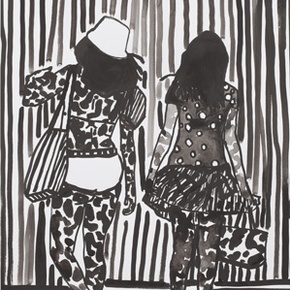
On Documentation
Parastou Forouhar in conversation with David Hodge and Hamed Yousefi
The most obvious way to begin talking about Parastou Forouhar's 1998 work Documentation is simply to tell the story behind it – the relationship that it has with a set of political murders that took place in Iran in the late 90s. Forouhar and Hamed Yousefi's conversation discusses how the artist came to create this experience, archival and cloaked in beauraucracy, and what its significance might be.
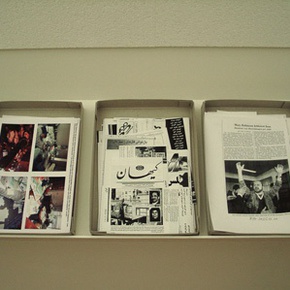
The Woven Archive
Héla Ammar in conversation with Wafa Gabsi
Héla Ammar is a visual artist, PhD graduate of law and a self-defined militant feminist. In her photography, she has often chosen to put herself centre stage in order to express her opinion on topics that shape the contours of an endlessly shifting, contemporary feminine identity. In this interview, Wafa Gabsi speaks to Ammar about the archive, the political situtation Tunisia post-2011, and Tarz (Embroidery) (2014), the artist's latest body of work, which was first presented at Le Violon Bleu in Sidi Bou Said, Tunisia.
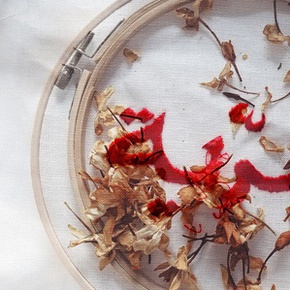
Narrative Treatments
Wael Shawky in conversation with Stephanie Bailey
Wael Shawky's work explores the cycles of history and myth – those narrative structures that both produce and propagate society's various belief systems, from the religious to the political. In this interview, he talks to Stephanie Bailey about the treatment of narratives within his practice, as both a form for composition and a frame for conceptual critique.

Meanwhile…History
Shumon Basar, Ala Younis and Omar Berrada in conversation with Sheyma Buali
The 2014 Global Art Forum (GAF) – the eighth edition of this series staged annually at Art Dubai – is an imagined timeline of turning points in history. On the occasion of the eighth Global Art Forum, Ibraaz editorial correspondent Sheyma Buali talked to this year's GAF Co-Directors, curator-translator Omar Berrada of Dar al-Ma'mun and artist Ala Younis, as well as Commissioner Shumon Basar, about what to expect from this year's intellectual mash up of speakers and themes.

Raising the Roof
Nevin Aladağ in conversation with Walter D. Mignolo
Nevin Aladağ's work spans mediums and subjects, from best friends, to stilettos, to the sounds of a city produced by turning unfamiliar and familiar objects into instruments and unfamiliar things into unwitting musicians. It is in this spirit that this this conversation between Aladağ and Walter D. Mignolo is framed, in which Aladağ talks about the diverse influences behind her practice.

After the Biennial
Fulya Erdemci in conversation with Basak Senova
Fulya Erdemci and Basak Senova continue the conversation that began in summer 2013, in advance of the 13th Istanbul Biennial, Anne Ben Barbar Mıyım? or Mom, Am I Barbarian? (14 September–20 October 2013), curated by Erdemci. In this discussion, Erdemci reflects on the outcomes of the biennial retrospectively, taking into account the impact of the Gezi Park protests.
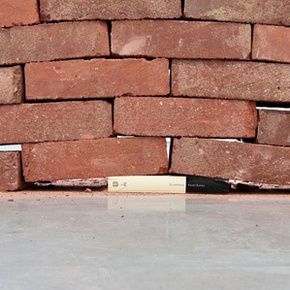
An Artwork is not Just a Passive Object You Hang on Your Wall
Elif Öner in conversation with Derya Yücel
Today, technology has formed its own linguistic structures and artists have transformed these linguistic structures into new forms and approaches they are able to use in their work so as to develop strategic practices that might be applied onto the social and cultural fields. Elif Öner is one such artist, who carries out research into the real and fictive boundaries of video, Internet and new media, and produces projects on concepts such as the museum, archive and memory. Derya Yücel talks to Öner about the creative potential and critical distance of virtual space.
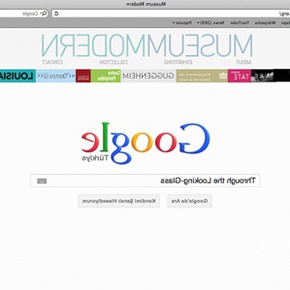
Photography as Apparatus
Akram Zaatari in conversation with Anthony Downey
Photographs are affected by their means of production, reproduction and distribution. The social and political economy in which they circulate, in turn, imbricates the very fabric and content of a photograph. In this extensive conversation with Akram Zaatari, these implications are explored and the ramifications for photography as an archival form are questioned. A member and co-founder of the Arab Image Foundation (AIF), a non-profit organization established in Beirut in 1997, Zaatari discusses the idea that the archival impulse has decontextualized original images by taking them out of their social and political economy, viewing the layers added to images through wear and tear as additions of meaning in the life of a photograph.
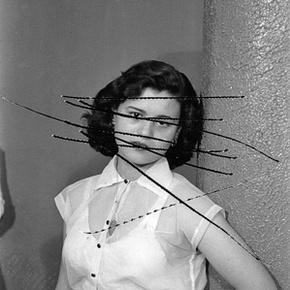
Samples of Life
Joe Namy in conversation with Garine Aivazian
This year's Home Works opened with a performance by one of the participants of Ashkal Alwan's Home Workspace Program, Joe Namy. The piece, aptly named Automobiles (2012–13), comprised of a set of cars that surrounded the Academy's entrance with their boots opened and music pumping out of each one of them. The performance turned into a raucous party with the participation of the audience, and made the piece all the more reminiscent of Beirut's cacophonous streets. In this interview, Joe Namy discusses his influences, his work methodology, and generally takes us through his world, quoting the likes of Fanon, Dolphy and Adorno.
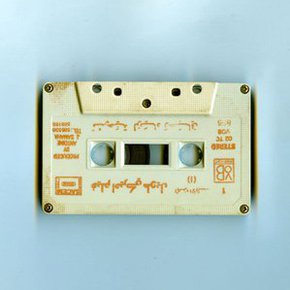
Curating the Revolution: Meeting Points 7
WHW in conversation with Omar Kholeif
Operating since 2000, the Young Arab Theatre Fund (YATF) is an organization that, despite its name, largely supports visual artists who hold a connection to the Arab world. One of YATF's most significant projects is Meeting Points – a biennial platform that roves from city to city. The seventh edition was curated by the curatorial collective WHW (What, How and for Whom?). The second stop on their tour was at MuKHA in Antwerp, where the collective presented an expansive exhibition entitled, Ten Thousand Wiles & A Hundred Thousand Tricks – a name adopted from Frantz Fanon's The Wretched of the Earth.
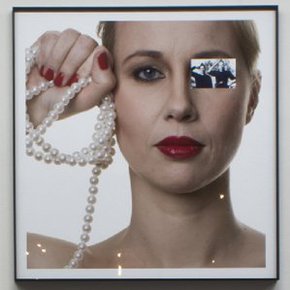
Image and Imagination
Ali Cherri in conversation with Sheyma Buali
'We need images to create history, especially in the age of photography and cinema. But we also need imagination to re-see these images, and thus, to re-think history,' is a quote by Georges Didi-Huberman, which was shared by Ali Cherri at the beginning of the following interview. The quote reflects the conflicting ideas and the crux of questions that Cherri faces in his work regarding history, politics, violence, images and their meaning and power. This interview follows the changing trajectory of Cherri's work, which explores sources, formats and platforms for historical visual documentation. Cherri discusses various factors of how imagination and image come together in defining our world, and considers the artist's interception to redefine it.
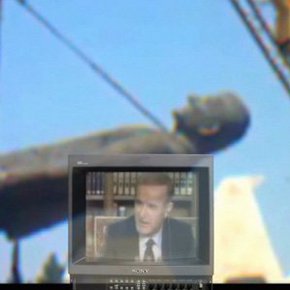
Alien Encounters
Rana Hamadeh in conversation with Stephanie Bailey
In April 2013, Rana Hamadeh staged a performance (part of an ongoing project, Alien Encounters, initiated in 2011) titled The Big Board, or…'And before it falls, it is only reasonable to enjoy life a little' (2013) as part of The Magic of the State (2013) at Lisson Gallery, London, curated by Silvia Sgualdini. The performance was inspired by Sun Ra's 1974 film Space is the Place, Oskar Schlemmer's 1926 diagram for Gesture Dance and Paulus Fürst's 1656 engraving of Doctor Schnabel of Rome. In this interview, Hamadeh discusses the performance in relation to her practice, and the idea of how to construct an imagined topography of the contemporary world order based upon the proposition of 'provincializing' earth.
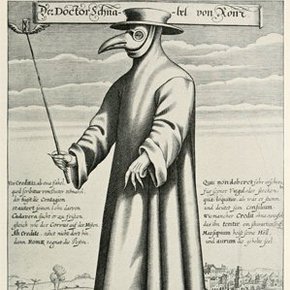
Expanding the Archive
Jumana Manna in conversation with Sheyma Buali
For the most part, knowledge is fragmented and knowledge of history even more so. Often histories are simplified, placed within vacuums of loosely-defined regional and nation-state borders where nuances are overlooked. Artist Jumana Manna counters this by allowing her audience a window where histories become cross-continental networks, exposing the sometime-unsettled subtleties of relationships. In this interview, Sheyma Buali speaks to Manna about her latest projects, discussing the importance of cracking otherwise accepted narratives of the past and opening up less explored avenues of history.
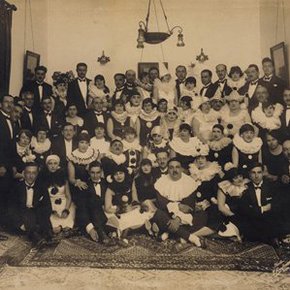
Object Study
Mona Marzouk in conversation with Aleya Hamza
Mona Marzouk's interest in architectural histories is visible in many of her works – in painting and sculpture as well as site-specific murals and paintings. Blurring the boundary between past and present day, man-made and natural, biomorphic and geometric, personal and political, beautiful and ugly, and masculine and feminine, Marzouk redefines how we see the world. With the sensibility of a maverick architect, Marzouk envisions aesthetic systems that draw on a diversity of cultural traditions but which can only exist in the realm of the imagination.
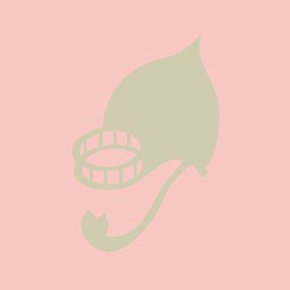
An Open Methodology
Ahmed Nagy in conversation with Mai Elwakil
I remember seeing the work of Egyptian artist Ahmed Nagy for the first time in 2010. From one of the back galleries of Cairo's Palace of the Arts roared the sound of a TV host presenting a game show in Ultimate Computing – The Holy Zero (2010), a video projection of a recognizable TV program that aired every night with an often seductively dressed presenter asking viewers to call in and answer the most absurd of questions. This was contrasted by another video projection: footage from science shows. Indeed, over the past decade, Nagy has become known in Egypt for work that reflects on scientific knowledge and the process of its creation alongside the workings of mass media. But his approach today could not be further from Ultimate Computing – The Holy Zero. In this interview, Nagy explains why.
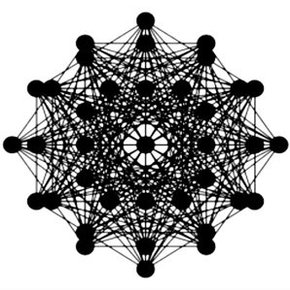
Then and Now
Adelina von Fürstenberg in conversation with Stephanie Bailey
Independent curator and film producer, Αdelina von Fürstenberg, is director and founder of Art for The World, a non-governmental organization founded in 1996 with a view to use art as a social force. This same belief has driven von Fürstenberg's career, which spans decades and first found inspiration in Harald Szeeman's Documenta 5. In this interview, von Fürstenberg discusses the 4th Thessaloniki Biennale, of which she was Chief Curator. For the exhibition, she looked at the Mediterranean Sea as a geographical space layered with histories and relations. Von Fürstenberg then discusses some of the influences behind her curatorial career, while looking back on the origins of Art for the World and the exhibitions it has produced worldwide.
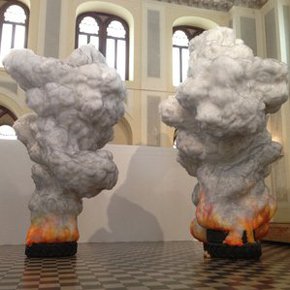
Lingering in Vicinity
Maha Maamoun in conversation with Aleya Hamza
Maha Maamoun's videos and photographs address the form and function of images that are found in mainstream culture. Her work acts as a lens through which we see familiar images in novel and insightful ways. She does so by making subtle interventions in photographic material that she captures on camera or borrows from various sources. Through an unusual crop, a seamless edit, an odd juxtaposition, an incongruent photomontage, or a staged remake, Maamoun shakes up our expectations and toys with our perception.
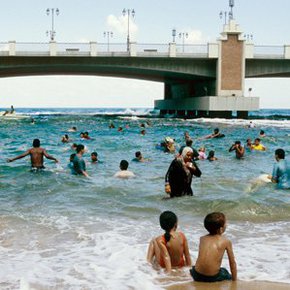
Influence, Passion, Process
Lucien Samaha in conversation with Walid Raad, Part II
In Part II of this conversation between Walid Raad and Lucien Samaha, Samaha talks about how he approaches photography, his influences and inspirations (or not), and the way his images are perceived by those who view them. Raad asks Samaha about a show he staged once at Lombard Freid in New York, and the self-portraits Samaha has taken throughout his life, which appear almost like 'proto-selfies', given the current trend for self-portraits taken by mobile phone cameras. In this discussion, Samaha then proceeds to define what a self-portrait is to him, and talks about the criteria he would use to judge whether something is indeed a self-portrait or not. What emerges in these ruminations is a portrait of the photographer himself.
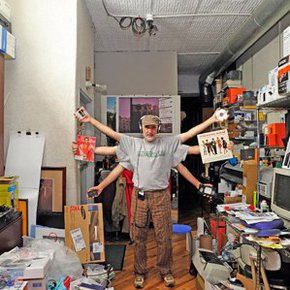
Chapters, Records, Keywords
Lucien Samaha in conversation with Walid Raad, Part I
In Part I of this extensive conversation between Walid Raad and Lucien Samaha, Samaha recalls the stirrings of his career as a photographer, which spans some forty years and which has passed through a number of phases and personal life moments, including life as a DJ, a flight attendant, and as a staff member at Eastman Kodak Company. In this, he talks about how he keyword indexes his personal archive, often by inviting friends to go over past images to provide names of those they once knew. In Samaha's explanation of these personal archives, memory and image connect.
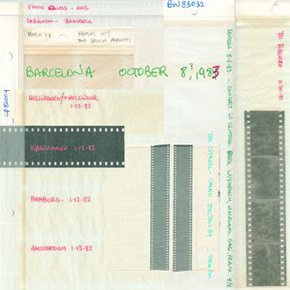
Archives on Archives
Maryam Jafri in conversation with Stephanie Bailey
Maryam Jafri has long engaged with the archive. One of her projects, Independence Day 1936-1967 (2009-ongoing), comprises of 67 plus archival photographs mainly from the first independence days of various Asian and African countries (over 23), including Indonesia, India, Vietnam, South Vietnam, Ghana, Senegal, Pakistan, Syria, Malaysia, Kenya, Tanzania, Mozambique, Laos, the DR Congo, and Algeria. In this sustained investigation into archival documentation of such foundational moments in the history of what have long been referred to as the postcolonial nations, Jafri observed a number of similarities and differences contained within the aesthetics and the forms of such momentous events.
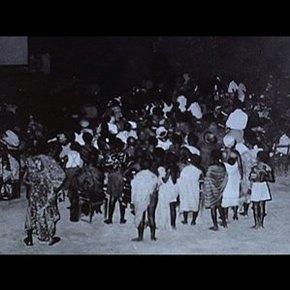
Opening Up: World Nomads Tunisia
Marie-Monique Steckel in conversation with Fawz Kabra
In May 2013, the French Institute Alliance Française (FIAF) organized the fifth edition of World Nomads, a festival presenting the diverse Francophone arts and cultures in New York through extensive programs in visual art, music, and performance. Previous iterations included Africa (2008), Haiti (2009), Lebanon (2010), and Morocco (2011). 2013's focus on Tunisia highlighted the country's post-revolutionary cultural landscape, here placed under thoughtful critical evaluation through charged art shows, film programs, and talks by leading Tunisian women on the role of women in post-revolutionary Tunisia's social, political, and artistic scene. Of course, presenting a culture at large can be reductive, but this was not the case with this year's World Nomads Tunisia festival. In this conversation with Marie-Monique Steckel, the president of the FIAF talks about opening up dialogues that would not have been possible before. In the discussion, Steckel stresses that the World Nomads Festivaldoes not have a political agenda. Rather, its aim is to open New York up to Tunisia: a moment to promote and support the work of the various Tunisian artists whose voices emerged after the revolution.
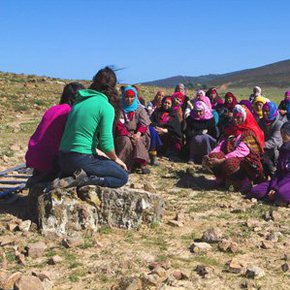
The public domain has opened up!
Fulya Erdemci in conversation with Basak Senova
Fulya Erdemci is the curator of the 13th Istanbul Biennial, Anne Ben Barbar Mıyım? or Mom, Am I Barbarian? (14th September – 20th October 2013). The theme for the biennial was decided well before the eruption of protests in Turkey, ignited by the planned demolition of Gezi Park on Istanbul's Taksim Square. The 13th Istanbul Biennial takes the public sphere as its thematic focus: a concept oft-debated in terms of content and definition. It intends to explore the public sphere as a 'matrix', while considering 'the role of art through inquiries into current-day spatial and economic policies, forms of democracy, the concepts of civilisation and barbarianism.' In this interview, Erdemci considers the impact of the Turkish protests on the upcoming Istanbul Biennial.

NOTES FROM THE RESISTANCE
Özgür Uçkan and Vasif Kortun in conversation with Basak Senova
In Turkey, the resistance has continued in many forms. Forums are organised in the parks; people share information and overuse social media; protestors try to organise regardless of the fact that everyone is now on the government's watch lists. In this two part-interview Basak Senova brings some voices and issues which have come into view with the resistance in Turkey from the field of culture. It starts with a conversation with Özgür Uçkan, a leading actor for the legal rights and freedoms on the Internet in Turkey, and continues with a conversation with Director of Research and Programs at SALT, Vasif Kortun discussing his responses to some vital hashtags of the resistance.

A Fraction of Experience
Omar Robert Hamilton in conversation with Elisabeth Jaquette
Omar Robert Hamilton, an independent filmmaker based in Cairo, is the producer of the annual Palestine Festival of Literature and a founding member of Mosireen, a media collective born out of the wave of citizen journalism in Egypt during The Egyptian Revolution of 2011. Though I Know the River Is Dry (2013) is his third fiction short film, an independent, crowd-sourced work, it weaves together familiar themes of Palestine: the division of families, it considers therole of the past and the notion of return. Evocative, elegant visuals are guided by the main character's voiceover narration, an intimate soliloquy of regret for the choices that brought him to leave his country and resolve in his return. Scenes of Palestine are punctuated by judicious use of archival footage; the past emerges as something both stitched into the present and to be weighed against the future. In this interview, Hamilton discusses his latest short film, finding a balance between art and activism.
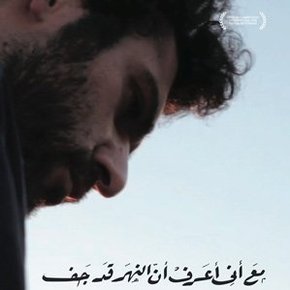
Ex Apartment
Matthias Lilienthal in conversation with Göksu Kunak
X-Apartments, a project by Matthias Lilienthal, took place in Beirut as the opening act of the festival Home Works 6. It was but another of the many site-specific installations X-Apartments has produced; others have taken place in Vienna (2003), Berlin (2004), Istanbul (2008), Sao Paulo (2009), Johannesburg (2010), Warsaw (2010) and Mannheim (2011), among others. After a year of teaching in the Home Workspace program of Ashkal Alwan, Lilienthal, together with former students originating from Syria, Egypt, Iraq, Lebanon, Kuwait, Germany, France, Netherlands, UK and Poland, produced what was approximately a four-hour tour of various apartments in Beirut neighbourhoods with audiences organized into groups of two, with Phil Collins and a group of students of KHM Cologne also invited to collaborate. In this interview Lilienthal discusses the X-Apartments project in relation to Beirut.
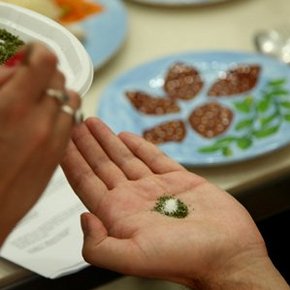
Letter to a Refusing Pilot
Seth Anziska in conversation with Daniella Rose King
In the summer of 1982, at the beginning of the Israeli invasion of Lebanon, an Israeli Air Force pilot was ordered to bomb a structure on the edge of the Ain El-Helweh refugee camp in the southern city of Saida. The pilot saw from the cockpit that the target could only have been a school or a hospital and refused the order. He cut off communication with officers on the ground and dropped his explosives into the sea. Word of this 'refusing pilot' spread throughout Lebanon and became an urban legend; an unbelievable tale of an Israeli Jew allegedly from Saida, who refused to bomb the Public School for Boys he was said to have attended as a child.

Speaking as Witnessing
Hera Büyüktaşçıyan in conversation with Basak Senova
Hera Büyüktaşçıyan was at Gezi Park until the police moved in. Approximately one week before the starting date of the Gezi Park Resistance in Istanbul, she had opened an exhibition titled In Situ (May 2013), the result of a four-month research and production residency provided by PiST///, Istanbul. Due to the course of her research on spatial, social, and historical memory, Büyüktaşçıyan dealt with a personal memory and history and researched the historical 'Pangalti Hamam', one of the many stunning examples of the destructive and careless implementations of neoliberal urban policy. This historical site was demolished in 1995 in order to build a five star hotel. This interview discusses the relation between Büyüktaşçıyan's research and the events that unfolded out of Taksim Square. It began in the first days of the resistance and was concluded a few days after the evacuation of Gezi Park.
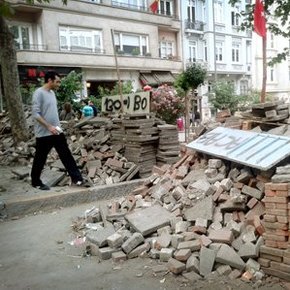
Common Grounds and Common Cultures
Kamel Lazaar in conversation with Anthony Downey
The Kamel Lazaar Foundation was founded with the ambition to promote thought leadership in the visual arts. Its long-term mission is to respond to the imminent need for the creation and dissemination of visual arts in the Maghreb and the Arab World. Through research and publishing initiatives, support for exhibitions, conferences, educational seminars, the development of a collection, an Artists' Projects initiative, and an emerging artist's prize, the Foundation develops sustainable forms of cultural dialogue and debate within the region and beyond. The following interview took place in London in September 2012, in which Kamel Lazaar, the Foundation's chairman, discusses the origins, aims and ambitions for the Foundation with Anthony Downey. The interview was revised in July, 2013, to take into account a number of new developments.

New Kids On The Block
Randa Mirza in conversation with Amira Gad
The New Kids On The Block (2011-12) is a project by Lebanese artist Randa Mirza, which to this date has never been presented before. This piece is the result of the artist's work, which began in October 2011, when she started working as an interpreter for Laure Stephan, a French journalist collaborating with Le Monde. Mirza started covering the Syrian revolution and its repercussions on Lebanon just when the 'Arab Spring' had reached Syria. Throughout that year, she found herself increasingly reporting the deeds of the Lebanese Sunni Islamist groups, which used to play a very marginal role in the political life of Lebanon prior to the Syrian uprising. She also covered how the Lebanese Sunni groups were instrumentalising the Syrian uprising in their struggle for political gains in Lebanon. Throughout this interview, Mirza tells of her personal experience of working alongside a journalist, taking a critical eye on the journalistic formats and approaches in relation to her work.

The Many Metamorphoses of Mounira al Solh
Mounira al Solh in conversation with Nat Muller
Mounira al Solh is a bit of a maverick in the Lebanese art scene. Her work is humourous, tongue-in-cheek and prone to the unexpected. Whether she deals with complex gender or political issues, or questions the pressures on Arab artists who are wedged between local and international expectations – a dose of lightheartedness serves as a strategy to open up conversation. If anything characterises her work it is an investment in the back and forth of dialogue without giving away who is doing the talking from which position. It makes for interesting, and at times very confusing, communication. She has been busy over the past few years, with shows and projects at Art in General, The New Museum Triennial, Stedelijk Museum Bureau Amsterdam, Bucharest Biennial, Istanbul Biennial, and Thessaloniki Biennial under her belt. In this conversation, al Solh discusses her work and her practice.
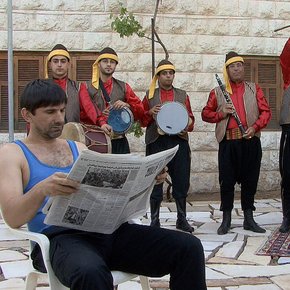
A Mobile Agent
Adelita Husni-Bey in conversation with Stephanie Bailey
In this interview, Libyan-Italian artist Adelita Husni-Bey talks about the idea of 'positionality' for an artist who comes from both sides of the regional divide. Being half-Libyan and half-Italian not only raises the issue of nationality when it comes to how artists are defined, but also reflects on the problems produced when thinking about identity in the twenty-first century, either in terms of the nation-state or in terms of a national or cultural identity. Considering the impact of globalisation, Adelita Husni-Bey talks about how she utilises and mediates the complexities of cultural origin in a global world currently (or constantly) in the process of defining and redefining itself.

A DREAM: The Iraq Pavilion at 55th Venice Biennale
Tamara Chalabi, Reem Shather-Kubba, and Jonathan Watkins in conversation with Basak Senova
This year's Iraq Pavilion at the 55th Venice Biennale takes place at Ca' Dandolo. Under the curatorship of Jonathan Watkins, the pavillion, titled Welcome to Iraq, was commissioned by the Ruya Foundation. It takes an opposite turn from the 2011 Iraq Pavilion, curated by Mary Angela Schroth under the theme 'Acqua ferita' (wounded water), presenting six artists of the Iraqi diaspora: Adel Abidin, Ali Assaf, Azad Nanekeli, Walid Siti, Ahmed Alsoudani, and Halim El-Karim. By contrast, the 2013 pavillion presents eleven artists living and working inside the country: Jamal Penjweny, Abdul Raheem Yassir, Bassim Al-Shaker, Cheeman Ismaeel, Kadhim Nwir, Furat al Jamil, WAMI (Yaseen Wami, Hashim Taeeh), Akeel Khreef, Ali Samiaa and Hareth Alhomaam.

Errant Propositions
Jeremy Hutchison in conversation with Natasha Hoare
Jeremy Hutchison's work often explores the absurdity of the everyday, a strategy employed to make visible power structures inherent to global flows of production, while offering disruptive proposals for alternative situations. His work Err (2011) earned widespread recognition and comprised of a series of commissioned 'incorrect' versions of objects factory workers produce everyday: (the workers were invited to 'design' the malfunction). Hutchison has made work in different global contexts, including the West Bank, Palestine, where he recently completed a 3 month residency as part of a Delfina Foundation and ArtSchool Palestine residency series between London and Ramallah. Whilst in Palestine, he created the installation Fabrications (2013), which combines a number of interventions staged during the residency. It will be shown as part of an exhibition, Points of Departure (2012), which will be showing at the Institute of Contemporary Art in London from 26th June to 21st July 2013.
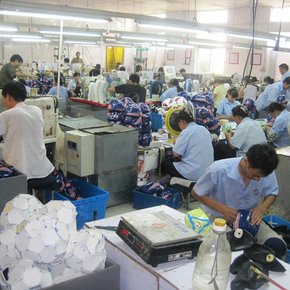
The Activity of Painting and Other Actions
Nadia Ayari in conversation with Haig Aivazian
Nadia Ayari's work is full of tension. Densely composed with very little breathing room, her thick goopy paintings depict strange and natural settings, where the vegetation and the architecture seem to have been permanently morphed by an undisclosed incident. Branches smothering olives, plump figs gushing fountains of red fluid, intertwined lingual leaves and so on, Ayari's imagery oscillates between gauche sexual insinuations and understated, restrained allegories. All the while the work constructs an eerily surreal landscape devoid of any clear allusion to humanity, but where elements constantly take on characteristics that are not their own.

Succinctly Verbose
Visualizing Palestine in conversation with Haig Aivazian
In early 2012, mainstream news finally caught on to the plight of Palestinian prisoners held in Israeli jails. The attention was brought on largely by a hunger strike undertaken by Khader Adnan prior to his April release that same year, after 66 days of imprisonment without charge: the longest hunger strike in the history of the Palestinian struggle. But while the resolve of Adnan's protest was clear to see, the physical effects of hunger strikes are little known to the mainstream public. But in February 2012, a timeline began circulating on social media, designed by a group called Visualizing Palestine (VP). The work portrayed the durational progression of a hunger strike – its dangers and physical effects – alongside a history of the use of hunger strikes as a tool for non-violent struggles. In this conversation, VP talks about the power of telling stories through the use of data and infographics and why they think their succinct infographics are so discursively rich with information, history and affect.
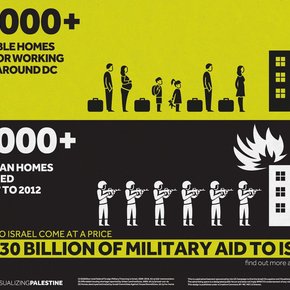
Representing Regions
Sheikha Hoor Al-Qasimi in conversation with Stephanie Bailey
Sheikha Hoor Al-Qasimi grew up with the Sharjah Biennial. She was thirteen when it was conceived (in 1993) and remembers the first editions being held in the Expo Centre. When she graduated from the Slade School of Art in 2002, she travelled to Germany and chanced upon Okwui Enwezor's 2002 Documenta 11. For her, it was a moment she realised what art could do, joining the Sharjah Biennial committee soon after. In 2003, Al-Qasimi co-curated Sharjah Biennial 6 alongside Peter Lewis – an event that saw the biennial move into its current location, the arts and heritage areas. Then, in 2009, the Sharjah Art Foundation (of which Al-Qasimi is president), was established to manage the biennial and develop contemporary art in Sharjah and the region through endeavours including the annual March Meetings and an active exhibition and educational programme. This interview explores the issues surrounding the Sharjah Biennial, one of the region's oldest and most progressive biennials.
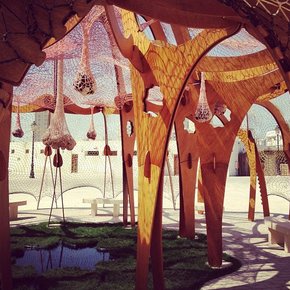
Post-Apollonian
Simone Fattal in conversation with Mirene Arsanios
I first came across The Post-Apollo Press through Jalal Toufic's book, Undying Love or Love Dies. But it was not until I read Lyn Hejinian's My Life that I discovered the richness of Simone Fattal's publishing work. She has published many authors that have stood out to me as references: Lyn Hejinian precisely, Leslie Scalapino and Etel Adnan's exhilarating depiction of Beirut in 1982 in the Arab Apocalypse. From Sausalito, California, Fattal has published more than fifty-seven titles over the last thirty years, with authors from all over the world. I wanted to know more about the history of Post-Apollo: its roster of authors, its economical viability and its subsistence through the Internet in the present epoch of digitised literature. It is a project that traverses different epochs and styles, collating silence, knowledge, and production in a unique way: something I attempt to investigate in this interview.

Sonic Diaries
Cynthia Zaven in conversation with Basak Senova
In 2012, Cynthia Zaven composed Morse Code Composition for flute and accordion by transcribing a William Faulkner quote into Morse code. Alessandra Rombolà on flute and Esteban Algora on accordion performed the composition during Irtijal, an experimental music festival that takes place in Lebanon annually. A longer version commissioned by the Institute of Contemporary Art was presented within Soundworks, as part of Bruce Nauman's exhibition Days, and presented in the lower gallery of ICA, London (19th June to 16th September 2012). For Zaven, the musicians/improvisers performing the piece take on the role of the 'protagonist', while the audience becomes 'witness', as the musical score and recording produce 'lasting documents'. Therefore, it is not only the act of writing music, but also the moment of the performance, which has strong ties with narration and the questioning of time – the most essential components of her artistic practice.

A State of Exception
Mario Rizzi in conversation with Dorothea Schoene
In this interview, artist and filmmaker Mario Rizzi discusses his work since 1999, with special focus on recent production, Al Intithar (The Waiting). A co-production with the Sharjah Art Foundation, for Al Intithar, Rizzi filmed the life of Syrian refugees at camp Zaatari in the Jordanian desert over several weeks from September to November 2012. Dorothea Schoene talks to Rizzi about how the themes in Al Intithar are expressed in his general practice as an artist and filmmaker with a focus on marginalisation in the human experience.
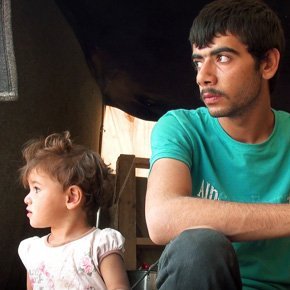
History as Concept
Lasse Lau in conversation with Amira Gad
'The past can be seized only as an image which flashes up at the instant when it can be recognised and is never seen again,' wrote Walter Benjamin on 'On the Concept of History'. Lasse Lau considers this in 2012 work, Sound from the Hallways. In the film, the artist revisits history at the Egyptian Museum in Cairo, one of the most visually dense and unique museums in the world, and challenges concepts of historicism and museology from the early twentieth century. He starts with a time when history was still seen as universal and man believed in its abundant truth. It moves into times where several histories challenge each other for the semblance of reality. In this interview, Lau expands on the notion of historicity, the fragmented nature of narrating history, and takes us deep into the references that aspire from his film, widening the scope beyond time and space.
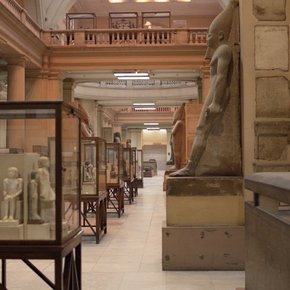
Going Both Ways
Yuko Hasegawa in conversation with Walter D. Mignolo and Stephanie Bailey
Yuko Hasegawa is the Chief Curator of the Museum of Contemporary Art, Tokyo, who was invited to curate the 11th Sharjah Biennial – Re:emerge, Towards a New Cultural Cartography, staged for three months from 13th March through 13th May, during a glorious 2013 Gulf spring. It was a contentious biennial for all the opposite reasons of the 2011 Sharjah Biennial 10, which raised debates and discussions that have been written about relentlessly, and which extend beyond the discourses of art and into the politics of the region. In 2013, Hasegawa, declared Sharjah Biennial 11 a biennial for the 'Global South' – one that entered into the world of the locality; exploring it and easing its way into a polyphonic discussion. It was an event that felt like a fresh start – a new beginning; one Hasegawa elaborates on in this discussion between herself, Walter D. Mignolo and Stephanie Bailey.
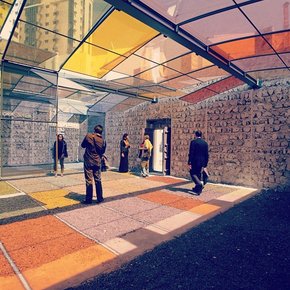
Breaking Glass
Monir Shahroudy Farmanfarmaian in conversation with Stephanie Bailey
A legacy has developed around Iranian artist Monir Shahroudy Farmanfarmaian. It is rooted in traditional Iranian reverse mirror painting and mirror mosaics – Aineh-Kari – appropriated to produce new and modern forms guided by the universal laws of geometry. Famously, Warhol kept a work by her on his desk, though the Marilyn portrait he gifted to her was confiscated during the Iranian Revolution, an event that caused Farmanfarmaian to move back to New York, where she continued to produce work. But it was Farmanfarmaian's return to Tehran in 2004 that solidified this octogenarian's (88 going on 89) position as a bonafide legend. It commenced a period of productivity explored in a recent survey exhibition at The Third Line in Dubai (18th March to 19th April 2013). In this interview, conducted on the exhibition's opening day, Farmanfarmaian discusses her life and work.

From Invisible Enemy to Enemy Kitchen
Michael Rakowitz in conversation with Anthony Downey
Michael Rakowitz is an Iraqi-American conceptual artist whose work is influenced by his cultural origins, not so much in terms of identity, but as a means through which to engage issues that affect cultural production and the loss of culture. An artist with a concern for the economies of exchange that inform social, political and historical events, it is in the contested realm of human experience that Rakowitz situates his practice. However, rather than offering solutions to forms of social inequality and historical injustice, or attempting to ameliorate social and cultural loss, Rakowitz's practice is more about agitation and the antagonistic counter-narratives that continue to re-emerge in any accepted version of events.

A Woman's Place?
Robin Kahn in conversation with Stephanie Bailey
In 2012, Robin Kahn worked with a collective of women from Western Sahara to create The Art of Sahrawi Cooking, an installation and series of events for dOCUMENTA(13). The project was inspired by a book Kahn produced: Dining in Refugee Camps: The Art of Sahrawi Cooking (2010), the fruit of Kahn's experience in the refugee camps of the Western Sahara as part of the ARTifariti festival in 2009. The project stems from the idea that the word haima means both 'family' and 'tent' in Hassanyia, the Sahrawi's Arabic dialect. For dOCUMENTA(13), Kahn transplanted a tent – the centre of Sahrawi social life – from the sands of the Tindouf Refugee Camps in Algeria to the soil of the Karlsrue Park in Kassel, producing a project exploring the idea of space and the sense of community produced within that. In this interview, Kahn discusses the roots of the project and how it relates to her practice as an artist.

Coding For Change
Ayah Bdeir in conversation with Omar Kholeif
Ayah Bdeir is the creator of littleBits, an open source system of preassembled, modular circuits that snap together with magnets – making learning about electronics fun, easy and creative. An engineer, inventor and interactive artist, Ayah received her master's degree from the MIT Media Lab and undergraduate degrees in computer engineering and sociology from the American University of Beirut. Ayah has taught at New York University and Parsons The New School for Design and has taught numerous workshops to get non-engineers – focusing young girls – interested in science and technology. She is also the founder of Karaj, Beirut's first media lab for experimental art, architecture and technology. In the interview that follows, Bdeir discusses the difficulties of teaching technology in non-traditional contexts, copyright law, and the relationship of art and technology in Lebanon and the wider region.
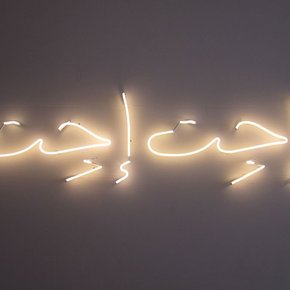
The Art of Subversion
Caveh Zahedi in conversation with Stephanie Bailey
Caveh Zahedi is an Iranian-American filmmaker whose work is positioned uncomfortably between what is acceptable and what is not. The Sheik and I (2012), the artist's most recent feature film, is also his most controversial work to date. Commissioned by the Sharjah Art Foundation as part of the 2011 Sharjah Biennial, Art as a Subversive Act, it was quickly banned precisely for its 'subversive content', unleashing a barrage of criticism – and legal battles – against the filmmaker.
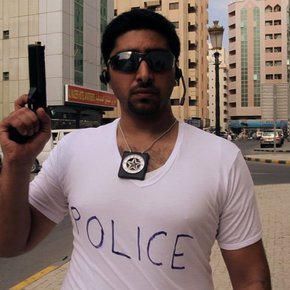
Domestic Nature
Abbas Akhavan in conversation with Anthony Downey
In this video interview, artist Abbas Akhavan walks Anthony Downey through his exhibition Study of a Garden. Produced during a ten-week residency hosted by the Delfina Foundation in London, and in direct response to the Foundation’s adjacent and soon-to-be renovated space at 31 Catherine Place, the exhibition staged a series of tableaux that placed external elements – creeping ivy, garden plants, and soil – throughout the building. References to landscape and nature abound in this installation as does the suggestion of latent traumas and submerged narratives. Born in Tehran, Akhavan has been living in Canada since 1992. Study for a Garden was the artist’s first solo exhibition in the UK.
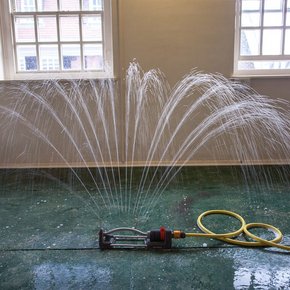
Curating Film
Rasha Salti in conversation with Fawz Kabra
Rasha Salti is a writer and curator of film and visual art. In 2011, she co-curated the 10th edition of the Sharjah Biennale and is currently the programmer of African and Middle Eastern Cinema at the Toronto International Film Festival. In this interview, Salti speaks with Fawz Kabra about one of her latest projects, Mapping Subjectivity: Experimentation in Arab Cinema from the 1960s to Now, a three-part film series co-curated with Jytte Jensen at the Museum of Modern Art, New York, and screened between 2010 and 2012.
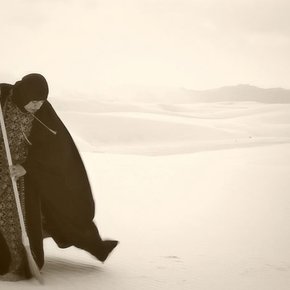
Human Mechanics
Pascal Hachem in conversation with Nour K Sacranie
Pascal Hachem lives and works in Beirut, where he is Creative Director of Pslab and Design Instructor at the American University of Beirut. In this interview with Nour Sacranie, Hachem talks about the political, the mechanical and the temporal in his artistic practice within the context of working under the ever-unpredictable conditions in Beirut. Sacranie and Hachem revisit a 2010 exhibition Bring the Boys Back Home, shown at Selma Feriani Gallery, London, exploring the themes and ideas explored in works presented, just as Hachem returns to the gallery once more for his latest show, opening January 2013, titled BELIEFS IN SELF-DECEPTION.
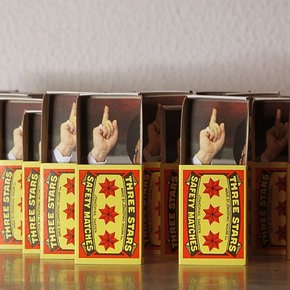
The Non-Located Space
Mahmoud Khaled in conversation with Omar Kholeif
Mahmoud Khaled is an artist who lives and works between Alexandria and Beirut. Since studying painting, Khaled has focused on exploring how we use the different spaces in which we live and communicate.
In Do You Have Work Tomorrow? (2012) a newly commissioned project for Ibraaz, the artist captures the ephemeral nature of desire as it manifests against the backdrop of a turbulent and perpetually shifting cityscape. A two-hander, Khaled's work presents a staged conversation using Grindr, the locative mobile phone application designed for gay men. In this discussion, Khaled talks about how software has re-articulated notions of both private and public space and considers how mobile media has affected everything from male representation to pedagogy.

Image Politics
ismaël in conversation with Wafa Gabsi
Tunisian artist ismaël lives and works in Tunis, where he was born in 1981. ismaël's work explores the social and political functions of the image as mediated via contemporary modes of dissemination, from television to the Internet. Moving fluidly between writing, blogging, producing video art, documentary filmmaking and curating, recent exhibitions include Breath of Freedom, a virtual group show presenting work by Tunisian artists created before and after the revolution, curated by Mohamed Ben Soltanein 2011, and Politiques/Politics at the National Center for Living Art in Tunis in 2012, organised by ismaël alongside artists Nidhal Chamekh, Ymene Chetouane, Fakhri El Ghazel, Maher Gnaoui, Malek Gnaoui, Atef Maatallah and Ibrahim Màtouss. In conversation with Wafa Gabsi, ismaël considers the influences and uses of new media in art and society.

Conserving memories
Zeina Arida in conversation with Laura Allsop
Born in Beirut in 1970 and educated between her home city and Paris, Zeina Arida studied Literature and Theatre at Sorbonne University before graduating in 1993 and returning to Beirut. Arida has been the Director of the Arab Image Foundation since its establishment in 1997 by photographers Fouad Elkoury and Samer Mohdad and artist Akram Zaatari. The foundation is a non-profit organisation that preserves and promotes photography in the Middle East and North Africa by diligently locating, collecting and archiving the region's photographic heritage. In this interview, Laura Allsop talks to Arida about the history of the Arab Image Foundation, looking back on how it has evolved over the years to become one of the key resources on the Arab world and its historical images.

The Video That Exploded
Roy Samaha in conversation with Anthony Downey
Roy Samaha is a Lebanese artist based in Beirut. Practicing with video and photography since 2002, he has exhibited in numerous film and contemporary art festivals. Between 1998 and 2008, he worked in the television industry as part of his field research on electronic media. He got his Master's degree in film studies at USEK, Lebanon. Currently, he is giving seminars on alternative video practices in different universities in Beirut. In this conversation with Anthony Downey, he talks about the various influences on his work, including William Burroughs, and how technology affects not only how we perceive the world but changes modes of perception over time.

What We Choose To Overlook
Lida Abdul in conversation with Sara Raza
Lida Abdul is an Afghan video and performance artist born in 1973 in Kabul. Forced to flee Afghanistan following the Russian invasion and the war that followed, Abdul lived as a refugee in Germany and India before settling in the US, where she has been based now for over two decades, dividing her time between LA and Kabul. Her works poetically document disasters that have befallen her native country – the Russian invasion, the infiltration of the Taliban regime and the American 'War on Terror' - all of which have inspired Abdul to create highly emotional works that reflect on the subject of life post-devastation. In this interview with Sara Raza, Abdul discusses her works dealing with trauma and healing post-devastation.
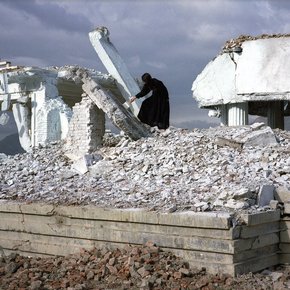
Towers, Portals and Myths
Diana Al-Hadid in Conversation with Fawz Kabra
Diana Al-Hadid’s sculptures seem as though they come from another time: a future past, or a parallel time space. Her visceral works can both draw you in by their intricate qualities or else repel you away, due to their imposing size. A scorched cathedral turned on its head so that it sprouts out of its spires, or a tower twisted in its own self destruction, for example, are works that impose their own narratives while conjuring legends from a distant past. Al-Hadid’s sculptures are the result of her keen interest in ancient mythologies, histories of painting and sculpture, and the inventions and discoveries in physics and astronomy. These interests lead her on investigations into how these alternate mechanisms and narratives can materialise into physical mass in space. Al-Hadid’s figural sculptures are investigated in much the same way as her architectural structures. In this conversation with Fawz Kabra, she underlines her concern with mass, lines and planes, how they link both modes of building, and how her figures are not direct characters but rather look at the structure in which these characters are shaped. When studying the figure, Al-Hadid is looking at representations and imagining the physical structure of narratives. Whether architecture or figural, Al-Hadid’s sculptures are a fusion of layers of materials that have been mounted in their basic components.
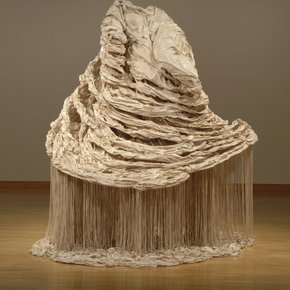
Against Interpretation
Hassan Khan in conversation with Omar Kholeif
Hassan Khan is an artist who lives and works in Cairo, Egypt. To coincide with a new selective survey exhibition at SALT in Istanbul, Ibraaz's Senior Editor Omar Kholeif opens up a conversation with Khan about a body of work produced between the late 1990s and the present day. The discussion that follows finds Khan articulating the tension between approaching material that is both autobiographical and historical, explores the artist's interest in monuments, and reveals his ambivalence towards the generic and medium-specific implications that demarcate the broad field of the visual arts.
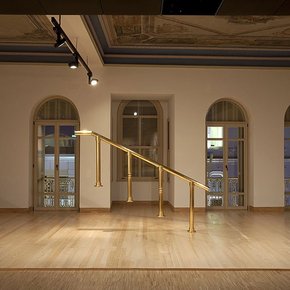
The Symphony of Death
Adel Abidin in Conversation with Basak Senova
Adel Abidin's works reflect on the cruel realities of socio-political situations in different geographies, utilising a refined aesthetic expression that creates frequently shocking paradoxes. Often oscillating between opposite poles, his works challenge viewers, enveloping them, trapping them as witnesses. Symphony, a work responding to the appalling stoning of teenagers with 'emo' appearances in Iraq in 2012, was presented as a sculpture and video-based installation at Arter in Istanbul. The sculpture-based installation featured 90 small white doors in the walls, evoking a morgue; some of them were closed, while some were open. When the viewer pulled open the doors, small white statues of these young people, resting in peace, came into view on the sliding drawers.

Fragments of Home
Jeanno Gaussi in conversation with Dorothea Schoene
Jeanno Gaussi's films, videos, photographic works and installations explore undefined spaces and times, and embody dynamics of a constant diaspora that is both personal and social. Gaussi spent her childhood in Kabul, where she lived up until she was five years old, before moving to Delhi and Berlin, and her work can be seen as an attempt to recuperate and reconstitute a possible identity, made of multiple fragments and colliding memories. At this year's dOCUMENTA (13), the Afghan-German artist showed a series of portrait paintings at the Kassel venue, taken from black and white photographs of her family members. In her most recent work, Gaussi has been searching for traces of her family history in Kabul. After locating the remaining walls of her grandfather's house, the artist began an encompassing documentation of the ruins: taking videos, photographs and sketches and treating the site like an excavation ground. Gaussi's project for Ibraaz is a selection of photographs from this ongoing project and she is interviewed here by Dorothea Schoene.
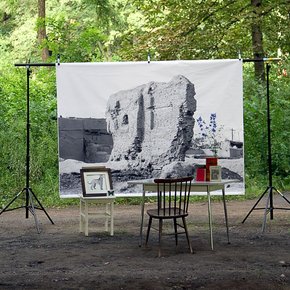
Running the Territory
Guy Mannes-Abbott in conversation with Sheyma Buali
Jean Fisher's introduction to Guy Mannes-Abbott's recently-published book In Ramallah, Running points out the significances of the spaces that we are about to run through with the author. Using Henri Lefebvre's differentiations between the 'perceived space' - that which is lived in, holding of purpose and meaning - and that which is the 'conceived space', created by cartographers, planners and, most importantly in this case, colonisers, Fisher undermines both of these with Lefebvre's concept of the 'third space', the space of our imagination, 'which knows no limit'. As likely outsiders, who only know Palestine through pictures and stories, we take this trip with Mannes-Abbott as first-timers: challenging the boundaries and sniper threats, and trying to imagine the everyday normality beyond the narrative fed to us all the time. In this interview, Sheyma Buali speaks to Mannes-Abbott about the uniqueness of this city, its politics, history and terrain as well as what inspired him to create a work that has such intimate proximity to the place he experienced.
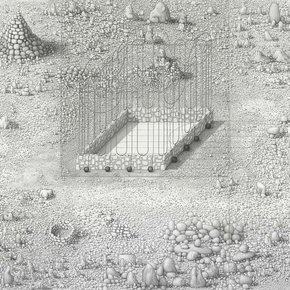
Looping the loop
Amina Menia in conversation with Laura Allsop
The work of Algerian artist Amina Menia attempts interventions into the city - usually the city of Algiers - in ways that underline how history and memory are inscribed into the urban fabric. Working across installation, sculpture, film and photography, her works encourage interaction and exchange and are often rooted in the contested notion of public space, not least because a great many of her proposed works intervening in the city of Algiers, for example, remain unrealised as a result of trying to navigate the city's many-layered bureaucracy. When she does not work in the city itself, she often brings the city into the gallery space, be it with sculptures made of scaffolding, or external window grilles brought inside. In this interview with Laura Allsop, Menia talks about how her unrealised projects have become performative 'meta-works', and how they constitute in her words, an art of the 'unspoken, the invisible, and unreachable'.
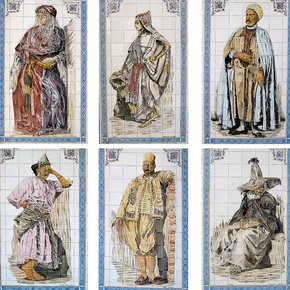
Stereotyping the Stereotypes
Tarek Al-Ghoussein in conversation with Anthony Downey
Tarek Al-Ghoussein is an artist based in the UAE. His work has appeared in international exhibitions throughout Europe, the United States and the Middle East. His work is also featured in several anthologies and a monograph on his work In Absentia was published by Page One and The Third Line in 2009. Al-Ghoussein's work is in permanent collections at the Solomon R. Guggenheim Museum in New York, the Victoria and Albert Museum in London, the Royal Museum of Photography in Copenhagen, Darat Al-Funun in Amman and Mathaf Museum in Qatar. In this interview for Ibraaz, the artist explores the development of his work and how, through the form and technique of the self-portrait, it engages with preconceptions of what is meant by 'Arabness' in the eyes of both Arabs and non-Arabs alike. Al-Ghoussein also addresses what he considers to be a failure of sorts in his early photojournalist work and how his later body of photographs attempts to unpack what is meant by belonging and identity in a region where such ideals are not only beset by glib media representations but are also underwritten by the popular stereotypes of Arabness that circulate throughout the Middle East and beyond.

Workshopping the future
Shady El Noshokaty in conversation with Omar Kholeif
Shady El Noshokaty is an artist and educator based in Cairo, Egypt. For over a decade, he has pioneered a number of independent experimental media art workshops in Cairo, fostering a critical dialogue between patriarchal higher educational institutions in Egypt and peer-assisted learning groups.
In the following interview, El Noshokaty sits down with Ibraaz's Senior Editor, Omar Kholeif, to discuss the role that new media art practices play in contemporary Egyptian culture, as well as his hopes for its future development. At the core of their discussion is a desire to critique conservative approaches to arts education and to open up a space for the critical discussion of contemporary new media art practices.

An Accidental Orientalist
Tom Bogaert in conversation with Anthony Downey
Having worked as a lawyer for the United Nations High Commissioner for Refugees (UNHCR), Tom Bogaert has managed to garner a degree of access to communities throughout the Middle East that is often difficult to acquire. In his work with refugees he has witnessed first-hand the geo-politics of the region and since 2004, has channelled that knowledge into his practice as an artist. Speaking here to Anthony Downey, he explores the research processes that lead up to producing work and the sound project he has developed exclusively for Ibraaz. The latter involves sounds from cities in countries as diverse as Jordan, Iraq, Palestine, Lebanon, and Syria, and Ibraaz is pleased to showcase it here.

Absorbing Displacement
Bouchra Khalili in Conversation with Dorothea Schoene
Dorothea Schoene speaks to Moroccan-French artist Bouchra Khalili about her interest in dialect, focusing on her recent video installation Speeches (2012). The work finds invited exiled people re-articulating famous writings and speeches by authors such as Malcolm X, Abdelkrim El Khattabi, Mahmoud Darwish and Édouard Glissant into their mother tongues. Khalili's interview explores the tension between oral and written communication, and unpacks the artist's interest in studying the language used by different ethnic minorities. These issues raise questions that explore the dichotomies between local histories and grand narratives, and explore how an author's voice can be transposed through the physical act of disembodiment.
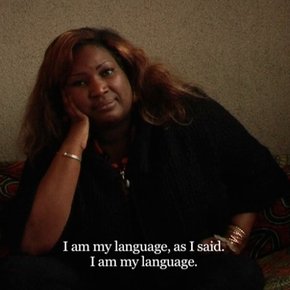
An Architecture of Apprehension
Timo Nasseri in conversation with Laura Allsop
Berlin-based artist Timo Nasseri explores language – be it mathematical, Farsi or, indeed, military – in his drawings and installation work. Starting out as a commercial photographer, Nasseri began making art works with a series of photographs and tactile sculptures of war machines that investigated both the insidious poetics of military nomenclature and the seductive packaging of weapons. Since then, he has taken inspiration from ostensibly diverse subjects as geometry, mathematics, and Islamic ornamentation in drawings and sculptures that underline their interconnectedness in terms of repetition and aesthetics. In this conversation with Ibraaz's Laura Allsop, Nasseri talks about his most recent body of drawings, inspired by a short story by Jorge Luis Borges.
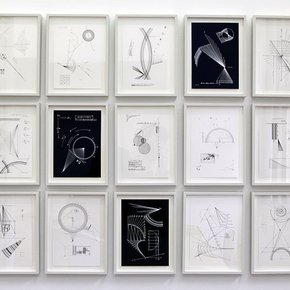
Auto-Connections
UBIK in conversation with Isabella Ellaheh Hughes
Kerala-born artist UBIK (real name Vivek) entered the Dubai art scene four years ago, gaining attention for a series of pen and marker drawings. Since 2010, the Dubai-based artist, who cites American pop culture and artist John Baldessari as his 'biggest influences', has notably shifted his practice to encompass text-based, conceptual works that encourage viewer interaction on various levels, ranging from self-reflection to direct action. This shift has resulted in work that tends to offer sarcastic yet introspective commentary on societal norms, political ideologies and human behaviour, whilst exploring different modes of production and pushing new relationships between text and materials as diverse as balloons, fortune cookies, LED tickers, cloth flags and wooden plaques – the latter resembling both gravestones and celebratory plaques.
In this interview with curator and critic Isabella Ellaheh Hughes, UBIK discusses his experiences as an emerging artist in Dubai and the current direction of his practice, as seen in his recent installation Autosuggestion (2012), which forms part of A Most Precarious Relationship: Artists, Audiences and Interactive Art in the Emirates at the Maraya Art Centre in Sharjah.
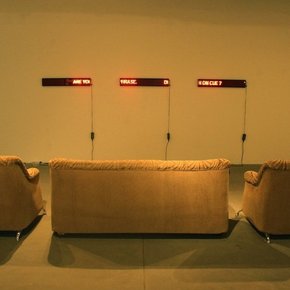
Restaging Invisibilities
Fayçal Baghriche in conversation with Laura Allsop
Fayçal Baghriche's work – which takes in performance, video, installation and photography – makes interventions into our ingrained patterns of perception, deploying subtle gestures that briefly turn our assumptions about the rhythms of city life, for instance, on their head. Whether recording himself reading out his CV in hopes of getting work on a crowded Paris metro (in the work Le Marché de L'emploi, 2003), or bamboozling tourists into thinking that a statue of Tutankhamun is a street artist (Philippe, 2008), his work invites us to think about the ways in which we navigate and scan the city, what we notice and, crucially, what we filter out.
In his most recent work, as he tells Ibraaz's Managing Editor Laura Allsop, he has been looking back to his Muslim roots and creating works that either actively look to the Middle East from a western perspective (as in photography series Musallat, in which the camera lens is pointed at the Kaaba in a variety of prayer rooms in Canada) or engage with the two perspectives together. An example of the latter would be Baghriche's film work The Message Project, in which the artist spliced together scenes from the English and Arabic versions of 1977 film The Message into one seamless film.
During a recent residency in Dubai, Baghriche also became interested in censored images he found in imported magazines, with images of nudity tastefully covered up with black calligraphic marks. These found images form the basis of a new body of work entitled Family Friendly, 2012, a selection of images from which are available to view in an online 'book' published here on Ibraaz.
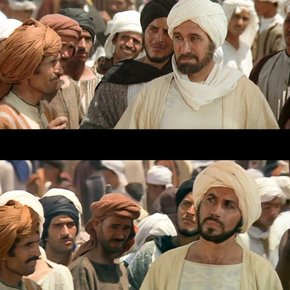
The Noise of Cairo
Heiko Lange in conversation with Amira Gad
In this interview for Ibraaz, Amira Gad speaks to German filmmaker Heiko Lange about his film The Noise of Cairo (2012), which explores the relationship between art and the Egyptian revolution. Featuring a host of cultural figures from Cairo, including artist Khaled Hafez, graffiti artist Keizer and Director of Townhouse Gallery William Wells among many others, The Noise of Cairo is a journey into the city's artistic scene, exploring the role it played during the revolution and how the events of the revolution and their aftershocks are now being processed.
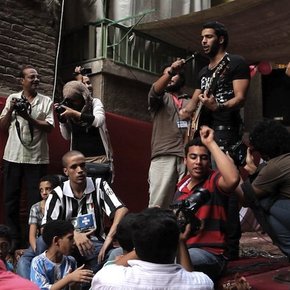
Geographic Gnomons
Ala Younis in conversation with Liane Al-Ghusain
In 1936, the Kuwait government began an initiative to bring in scores of teachers from Palestine to support their growing education system. A sizeable Palestinian pedagogical community was formed – however, by late 1990, almost the entire demographic, numbering 400,000, was either expelled or prohibited from returning to Kuwait due to the Palestine Liberation Organization's (PLO) ties with Iraq preceding and during the Gulf War.
In response to this unique history, curator and artist Ala Younis partnered with MinRASY Projects in Kuwait this summer to stage an intervention at the Museum of Modern Art, under the patronage of the National Council for Culture, Arts, and Letters, State of Kuwait. In creating the Museum of Manufactured Response to Absence (MoMRtA), which presented 28 newly-commissioned artifacts, the curators explored questions such as: What would it look like if Palestinian and Kuwaiti culture were hybridised? And how can we, in 2012, revive this unique era? In this interview for Ibraaz, writer Liane Al-Ghusain talks to Younis about unearthing this complex history and the process of commissioning artworks by a number of international artists for this 'nomadic' museum.
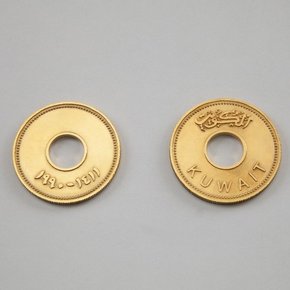
In Lieu of Absence
Taysir Batniji in conversation with Silke Schmickl
Palestinian artist Taysir Batniji's work spans video, painting, performance, drawing and installation. The artist, now based in Paris, has recently produced a new video alongside Paris-based film label Lowave. Independent curator and Lowave co-founder and director Silke Schmickl spoke with the artist in May about the new work, which premiered at the Cinéma du Réel festival at the Centre Pompidou this March within the programme Rising Images, curated by Lowave, and which was selected for the Expérimental-Essai-Art-Vidéo competition of the festival Côté Court in Pantin. In this new piece, entitled Ma mère, David et moi (2012) Batniji makes use of recorded conversations with his mother in Palestine to weave together a narrative about separation, absence and the failures inherent in modern methods of communication.
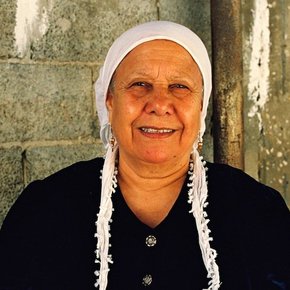
Nostalgia for the Future
Ala Ebtekar in conversation with Sara Raza
Ala Ebtekar is an Iranian-American artist whose practice explores the juncture between history and myth. Forging a multi-faceted project that melds Persian mythology, science, philosophy and pop culture together, his work returns us to the past as a way of envisioning the future. Currently Visiting professor at Stanford University, Ebtekar encourages his students to explore the potential in the relationship between art and science fiction and, in this conversation with Ibraaz’s Contributing Editor Sara Raza, discusses the practice of sampling and re-mixing, derived from his early experiences as a DJ, and his quest to locate a history of Iranian science fiction stretching as far back as the Sufi poets of the 10th, 11th and 12th centuries.

‘If Walls Could Talk ...’
Driss Ouadahi in conversation with Rachida Triki
Suburban high-rises are an unavoidable sight in cities across the world, their dominance both a statement of affluence and hubris. Algerian artist Driss Ouadahi paints these structures in works that explore the failed legacy of Modernism and the displacement of peoples from countryside to city and from country to country. In this conversation with Ibraaz’s Contributing Editor Rachida Triki, Ouadahi discusses a body of work dealing with suburban architecture, and recent paintings depicting chain-link fencing and tiled passageways – in short, the everyday urban language of restriction and control.
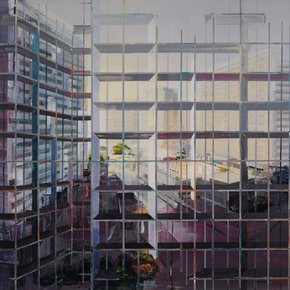
Colourful Shadows and Reel Journeys
Tarzan and Arab in conversation with Laura Allsop
Tarzan and Arab (real names Ahmad and Mohammad Abu Nasser) were born in Gaza in 1988, a year after the last cinemas in Gaza were closed. Long-time cinephiles, the identical twin brothers, who still live in Gaza, developed their passion for cinema with the help of Palestinian filmmaker Khalil Al Mozian. Since winning the AM Qattan Foundation's Young Artist of the Year Award in 2010 with a series of posters for fictional feature films named after Israeli Defence Force (IDF) military campaigns entitled Gazawood and a short film Colourful Journey (2010), they have had their work shown in London, Austin, and currently in Manchester at the Cornerhouse Gallery. Ibraaz's Laura Allsop speaks to the brothers about their love of cinema, the difficulties they encountered while filming and the first time they saw their own film screened in a cinema theatre.

After the Storm
Michket Krifa in conversation with Wafa Gabsi
One year after the revolution in Tunisia not only ousted a corrupt and corrupting regime but kick-started a wave of revolutions across North Africa and the wider Middle East, an exhibition entitled Dégagements, la Tunisie, Un An Après (Oustings, Tunisia, One Year Later) was staged. Curated by Michket Krifa, and held at the Institut du Monde Arabe in Paris, it showcased the works of some 20 Tunisian artists working in a range of media who witnessed first-hand the revolution as it unfolded. In the this interview with Tunisian writer and curator Wafa Gabsi, Krifa explains how the exhibition came to be and the concerns it expressed, while also discussing the conditions of artistic production in Tunisia today and the problems encountered in staging a show responding to the theme of revolution.
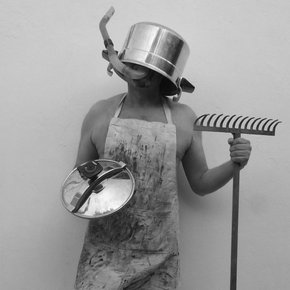
With Inside Outside
Nada Sehnaoui in conversation with Laura Allsop
The work of Lebanese artist Nada Sehnaoui tackles the contested issue of public space in post-conflict urban environments with a meditative aesthetic that engages forms of repetition. The artist often fills vacant lots in the downtown area of Beirut with hundreds of repeated items, be they toilets or stacks of paper, and encourages viewers to reflect on how the space is being, and has been, used through their engagement with these often idiosyncratic objects.
In this interview for Ibraaz, Sehnaoui talks to Laura Allsop about the importance of reclaiming contested sites for the public, of involving the public in her work, and of navigating the thorny path to gaining access to public space. In doing so, she not only hopes to create ephemeral, interactive memorials to an internecine war whose scars still remain etched into the fabric of the city, she also wants to trigger, in her words, 'a reflection on how to build a civil state.'
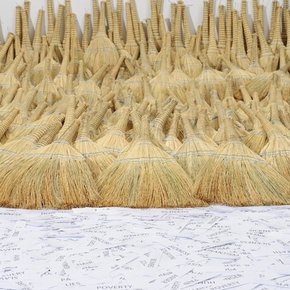
Home Workspace
Christine Tohme in conversation with Anthony Downey
Since its inception in 1994, Ashkal Alwan has become an international platform for the creation and exchange of ideas around artistic practices and educational processes. Having initially committed its resources to introducing the work of artists who were working within, and following on from the events of post-war Lebanon, the organization has since developed residencies, a research hub, public and civic projects, and an extensive education programme. One of these projects, Home Works Forum (HWF), launched in 2002, has since evolved into a pre-eminent platform for research on cultural practices within the region and beyond. Another project, launched last year under the name Home Workspace (HW), is a multipurpose facility dedicated to research, production and education in the context of contemporary artistic practices and debate. Housing production and editing studios, performance spaces, auditoriums, and Lebanon's first multimedia library for contemporary arts, Home Workspace is dedicated to developing an interdisciplinary approach to arts education in the Arab world.
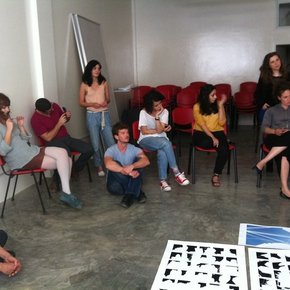
Migrations of Meaning
Lara Khaldi in conversation with Ghalya Saadawi
At the 2012 Global Art Forum in Doha, a new collaboration commissioned by Art Dubai, Mathaf: Arab Museum of Modern Art (Qatar Museums Authority) and lead by curator Lara Khaldi, was announced. Its ambition was to create an interactive Arabic Art Glossary, the first of its kind. Over the course of a year, a database of art terms and definitions in Arabic will be created, responding to the lack of any such existing glossary of terms and providing an invaluable resource for curators, writers, students and artists in the MENA region. In this interview for Ibraaz, Khaldi speaks to writer and Ibraaz Contributing Editor Ghalya Saadawi about the genesis of the project, why the question of cultural translation is so important in the MENA right now, as well as the traps, pitfalls and elisions of meaning that occur in any translation exercise.

The Shortest Length Between Two Points
Slavs and Tatars in conversation with Franz Thalmair
Slavs and Tatars is a collective, or 'faction of polemics and intimacies', founded in 2005 and dedicated to the area east of the former Berlin Wall and west of the Great Wall of China. After devoting the past five years to two cycles of work, including a celebration of complexity in the Caucasus (Kidnapping Mountains, Molla Nasreddin, Hymns of No Resistance) and the unlikely common heritage between Poland and Iran (Friendship of Nations: Polish Shi'ite Showbiz, 79.89.09, A Monobrow Manifesto), Slavs and Tatars have begun work on their third cycle, The Faculty of Substitution, on mystical protest and the revolutionary role of the sacred and syncretic. The new cycle of work includes contributions to group exhibitions – Reverse Joy at the GfZK, Leipzig, PrayWay at the New Museum Triennial and Régions d'Être at the Asia Pacific Triennial, as well as solo engagements at the Secession, Vienna (Not Moscow Not Mecca); Moravia Gallery, Brno (Khhhhhhh); MoMA, New York (Beyonsense), and the Künstlerhaus Stuttgart. The following is an interview with Slavs and Tatars conducted by Secession curator Franz Thalmair on the occasion of their exhibition Not Moscow Not Mecca in Vienna and for the accompanying publication for the show, which discusses their new cycle of work, their concept of transliteration and transubstantiation and the role of humour in art practice.
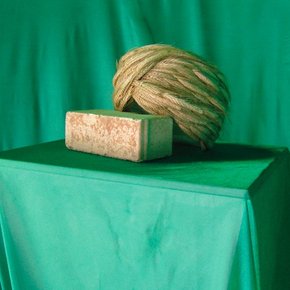
Word Stress
Lawrence Abu Hamdan in conversation with Anthony Downey
In a recent project with the Showroom in London, Lawrence Abu Hamdan presented The Freedom of Speech Itself (2012), an audio documentary that examined the history and application of forensic speech analysis and voice-prints in the United Kingdom's controversial use of 'voice analysis'. Accent, always a key signifier in determining an individual's identity, has now become a means to proscribe and outlaw certain accents when determining the origins and authenticity of asylum seekers' accents and their places of origin. Drawing on testimony from lawyers, phonetic experts, asylum seekers and Home Office officials, The Freedom of Speech Itself reveals the geo-politics of accents, and how such processes create newer and ill-defined states of exceptionalism when it comes to the rights of refugees. The show also included excerpts from Abu Hamdan's audio archive and a workshop led by the artist on Harold Pinter's play Mountain Language, written in 1988. In this conversation, Anthony Downey explores the motivation behind this work with the artist and how it has developed as an investigation into both the legal status of the voice and, perhaps more importantly, the legal implications of silence in the face of immigration laws today.

What Was Lost
Joana Hadjithomas and Khalil Joreige in conversation with Nat Muller
In the early 1960s, a group of students led by the professor of mathematics and physics at the Haigazian Armenian University in Lebanon, one Manoug Manougian, designed and launched rockets for the purpose of exploring and studying space. The project was called the Lebanese Rocket Society and was halted in 1967, an ominous date in the history of the Middle East and the world as a whole. The project has remained largely forgotten since. Over the past few years, Joana Hadjithomas and Khalil Joreige have used this project to trace a submerged history of rocket propulsion technology, the idealism of space exploration in the Middle East, and the connotations of rockets in the aftermath of the Six Day War between Israel and Arab Sates in 1967. The expiration of the Lebanese Society, coinciding as it did with the Six Day War, heralded an end to a number of things, not least the Pan-Arab ideal and the hopefulness once associated with space exploration. Were the two events linked – the technology of space exploration exchanged for the ordnance of militarism – or did they augur a more profound disillusionment that stills hangs over the ideal of revolutionary thought and idealism today?

The Jerusalem Show
Jack Persekian in conversation with Basak Senova
Jerusalem-based Jack Persekian is the curator of the Jerusalem Show, which was launched in 2007 with the Al-Ma'mal Foundation to present works, performances and interventions throughout the Old City. Showing works by mostly Palestinian artists, the exhibition functions as an attempt to re-read and re-negotiate a city torn apart by conflict. In this interview, curator and writer Basak Senova talks to Persekian about the genesis of the exhibition, the obstacles and practical issues inherent in staging an exhibition in a contested site, and the importance of improvization and contingency for the continuation of the event.

A Militant Cinema
Mohanad Yaqubi in conversation with Sheyma Buali
In this interview for Ibraaz, writer and critic Sheyma Buali talks to Palestinian filmmaker Mohanad Yaqubi about his latest project, Off Frame (2013). Working with found documentary footage of the first two years of the Lebanese Civil War shot by the Palestine Film Unit (PFU), these precious reels were lying neglected in Italy until Yaqubi re-discovered them in 2011. He has since brought them to life again to show the depth of Palestine’s filmmaking history, its role in shaping Palestinian identity, and its ties to the wider Third Cinema movement. What unfolds here is a story of a specific form of ‘militant cinema’, in which ‘reels were treated as ammunition and a narrative of commitment and circumstance in which images revisit a history once thought lost to the vagaries of war unfolds. To this, Yaqubi adds his own question, namely: Was there more revolution in cinema than revolution itself?
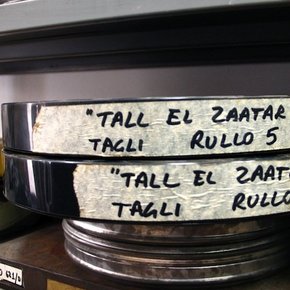
An Aesthetics of Expiration
Ziad Antar in Conversation with Anthony Downey
Born in Saida, Lebanon, in 1978, Ziad Antar studied at the American University in Beirut and the École Supérieure d'études Cinématographiques (ESEC) in Paris. His work in photography and video examines approaches to photography and what processes lie behind the production of images, not to mention their subsequent role as symbols of time passing, and the apparent realities of cities. Although not interested in the final quality of the image, Antar is singularly preoccupied with the exigencies and formal demands of image production and the everyday contexts out of which photographs emerge. What makes an image symbolic, he seems to ask; or, more simply, what makes an image?
In this conversation with Anthony Downey, Antar explores the processes involved in producing photography with expired film – some of it damaged, some half-usable – whilst using an obsolete camera. Defying the technological advances of digital photography, Antar enages with 'how images get eaten', or come to pass into archival contexts or, indeed, are consumed over time. For Beirut Bereft (2009), he took the abandoned buildings of Beirut as his subject matter, the precariousness of his practice reflecting, in part, the precarious status of these buildings. In his most recent project, Portrait of a Territory (2012), Antar turned his practice to the coastline of the UAE in an effort to depict its timeless outlines in the face of the unforgiving light – and, again, the vagaries of film stock and equipment – that reigns over the region, giving it both a feeling of visual homogeneity and yet a certain oneiric individualism.

Active Interventions/ Intervening Actions
Jasmina Metwaly in conversation with Angela Harutyunyan
Artist Jasmina Metwaly was born in Poland and grew up between Warsaw and Cairo. She moved to Cairo in 2009 and took part in the group exhibition Paradise Paradise at the Townhouse Gallery's factory space in 2010. Since then, and following the revolution that ousted President Hosni Mubarak in February 2011, Metwaly has been working with social media collective Mosireen and filmmaker Philip Rizk, to promote video activism and document unrest. In a conversation with art historian Angela Harutyunyan, Metwaly discusses the ambivalence of artistic production in the context of ongoing unrest and responds to what it means to be an artist working with the grammar of activism and against the backdrop of post-revolutionary Egypt.

Disposable Memories
Raed Yassin in conversation with Nat Muller
Lebanese artist and musician Raed Yassin’s work mines recent history and pop culture for hypnotic and frequently amusing works that range from video to performance to sound art. Sampling sounds and images from obscure Arabic records, Egyptian films, and cable television, Yassin creates visual and aural collages underpinned by forms of visual interrogation and iconoclasm that are both personal and political. These include the murder of the artist’s father in Beirut in the 1980s, which provides a starting-point for his 2011 video and installation work Who Killed the King of Disco, in which Yassin imagines his father not dying but leaving Beirut to become an Egyptian screen idol. Or the reign of Hosni Mubarak in the 2008 video The New Film, which splices together scenes from Egyptian films in which Mubarak’s portrait is ever-present.

A Life in Language
Adonis in conversation with Laura Allsop
Adonis, born Ali Ahmad Said Esber in Syria in 1930, is widely regarded as one of the Arab world’s greatest modern poets alongside the late Palestinian poet Mahmoud Darwish. Celebrated for books including Leaves in the Wind (1960), The Songs of Mihyar of Damascus (1961) and more recently, Beginnings of the Body, Ends of the Sea (2003), Adonis was central to pioneering a free-form, experimental Arabic poetry in the 1950s that drew from its rich past as much as it broke from it. Adonis was also one of the founders of the experimental literary magazines Shi’r and later Mawaqif, both of which he worked on while living in exile in Lebanon.
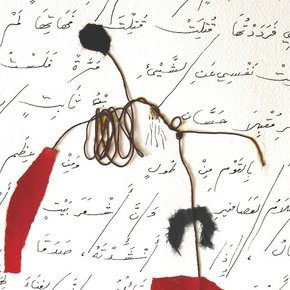
Un-thinking Systems
Shezad Dawood in conversation with Sara Raza
Engaging with a wide range of media, and executed across numerous networks and locations, Shezad Dawood’s work questions set parameters, both practical and conceptual. Pop culture, Sufism and structural filmmaking are just some of the elements that are regularly cited in his far-reaching practice. Dawood also explores ideas about mutability and hybridity, and here discusses work that will feature in his show at Modern Art Oxford, which runs from 4 April to 10 June 2012. The show includes New Dream Machine Project (2011), a film work and installation that examines Beat artist Brion Gysin’s stroboscopic flicker device and continues a series of investigations for which Dawood won the Abraaj Capital Art Prize in 2011.

Lost in Narration
Rabih Mroué in conversation with Anthony Downey
On the occasion of Rabih Mroué's US debut on the 6 January 2012, as part of PS122's COIL Festival , Anthony Downey speaks to the Beirut-based artist about his new 'lecture-performance' The Pixelated Revolution (2012), a work which examines the production of images in the context of the Syrian Revolution.
Suspended Lives and Emerging Voices
Nadia Kaabi-Linke in conversation with Lina Lazaar
Nadia Kaabi-Linke spent autumn 2011 in London developing new work as part of a residency at The Delfina Foundation, which facilitates artistic exchanges and dialogue between the UK and the Middle East and North Africa. In November, the artist sat down with Ibraaz’s Associate Editor Lina Lazaar to discuss her previous work and to outline her concept for a new project exploring immigration, religion and identity.
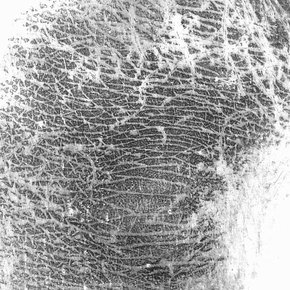
Restaging the (Objective) Violence of Images
Reza Aramesh in conversation with Anthony Downey
The work of Reza Aramesh, on the face of it, may seem to utilise relatively traditional forms of media; namely, sculpture and photography. However, it is important to note that his work has a performative element to it inasmuch as the images we see in both his photographs and the poses of his sculptures have often been restaged by individuals taking their cue – with the artist’s guidance – from newspaper photographs and other visual material. These forms of re-staging and re-framing – referred to as ‘actions’ by the artist – are integral to Aramesh’s work and the source material is often drawn from conflict zones worldwide; the very same zones that often crop up in our daily glut of print and televisual media. As viewers we are bombarded with these images until they lose their sense of context and meaning. How, then, do we reinvest these images with meaning and thereafter a degree of critical purchase?
For his most recent show in London, Aramesh’s figures lie prostrate in front of us or kneel abjectly awaiting a violence that is absent in the finished works – the source of the original violence, as noted, having been removed. As viewers of this work, we potentially step into the realm of being a perpetrator in this symmetry of violence and fear. What place, if any, do we have here as we approach these abject figures: are we potentially victims ourselves, potentially subject to the precariousness of what Giorgio Agamben refers to as ‘bare life’, a life beyond recourse to law and justice? Or are we victimisers in waiting, fearful that for all our empathy there is a fine line, in times of conflict and the suspension of law, between being subjected to violence and administering it?
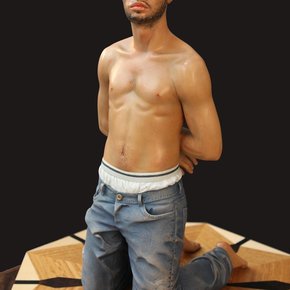
A Conversation
Ahmet Öğüt in conversation with Basak Senova
The work of Ahmet Öğüt is characterised by a playfulness that questions the reasons behind, and consequences of, socio-political and economic imbalances that have become the realities of our daily life. The artist, who was born in Diyarbakir, Turkey, and who currently resides in Amsterdam, is something of an art-world free-wheeler, un-tethered to a gallery but whose works are visible in cities and collections across the globe.
In this interview with curator, designer and editor, Basak Senova, Öğüt discusses his works, ruminates on the importance of public space and the developing culture of contemporary art presentation in his native Turkey.
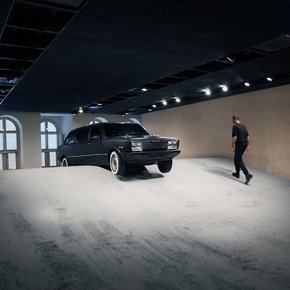
Resounding Images and Distances
Ismaïl Bahri in conversation with Silke Schmickl
Artist Ismaïl Bahri is known for his videos, drawings and photographs that highlight delicate and ephemeral phenomena. These could include the movement of ink in water, for example, or the tensile properties of a taut piece of string: simple things capable of evoking intangibility, friableness and volatility. The artist, who was born in Tunisia to a Tunisian father and Swiss mother, now lives and works in Paris. He has exhibited work at the Centre Georges Pompidou in Paris and at the British Film Institute in London, among other international institutions.
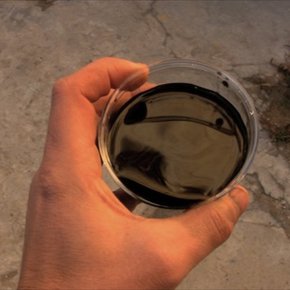
New Vocabularies for New Challenges
Newsha Tavakolian in conversation with Sara Raza
Newsha Tavakolian was born in Tehran, Iran in 1981 and is a self-taught photographer whose recent body of work bridges the worlds of documentary and art. Tavakolian began her professional career as a photojournalist aged 16 and has since had her work published in such esteemed international titles as National Geographic, Le Monde and the New York Times Magazine. More recently, she has exhibited her work in galleries around the world, including in The Third Line Gallery in Dubai and the Aaran gallery in Tehran. For this issue of Ibraaz, she talks to Contributing Editor Sara Raza about her practice and the issues relating to contemporary Iranian society that remain close to her heart.

Performing Histories
Wafaa Bilal in conversation with Sara Raza
Wafaa Bilal is celebrated for his politically inclined performance pieces that employ interactive technologies. Born in Iraq in 1966, Bilal left his country of birth in 1991 amidst the turmoil of the first Gulf War and spent the next two years in refugee camps in Kuwait and Saudi Arabia, before settling in the USA where he studied art at the University of New Mexico and the School of the Art Institute of Chicago. He currently lives in New York where he is an Assistant Arts Professor at New York University's Tisch School of the Arts. In December 2010 in Doha, Qatar, during Mathaf's inaugural contemporary art exhibition Told/Untold/Retold Bilal, unveiled his most ambitious project to date 3rdi (2010-11) – consisting of a camera surgically attached to the back of his head. The camera captured images and fed them through a wireless device to the internet, providing an alternative perspective on the current age of surveillance. Last month, Bilal sat down with Ibraaz's contributing editor Sara Raza to discuss his practice.
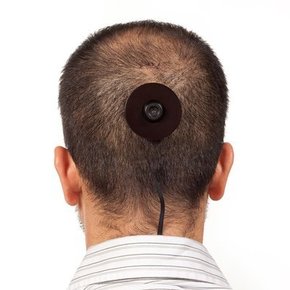
Curatorial Conundrums – Arab Representation at the 54th Venice Biennale
A roundtable discussion
The 54th Venice Biennial was notable for a number of things, not least the number of Arab artists represented there and, in some instances, the cancellation of shows – for a variety of different reasons – associated with the Middle East and North Africa. In a time of on-going revolt in countries throughout the Middle East, it also came as no surprise that media interest in Arab-related shows was unprecedented. Most of our readers will be familiar with The Future of a Promise, a show curated by Ibraaz's Associate Editor Lina Lazaar; however, in the following interview we invited three more curators involved in the Venice Biennial – Egyptian Pavilion executive Shady El Noshokaty, and the co-curators of The Mediterranean Approach, Adelina von Fürstenberg and Thierry Ollat – to discuss both the problems and the potential to be had in curating contemporary Arab visual culture in the current climate.
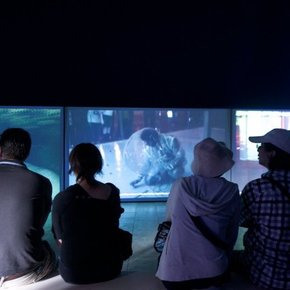
Zineb Sedira in Conversation
Over the last 15 years, Zineb Sedira has investigated the challenges inherent to multiple identity and migrations as well as her parents' recollections of the Algerian War. Her camera has also captured Algiers' blinding whiteness, the dense blue of the Mediterranean, and rotting shipwrecks in Nouadhibou, Mauritania.
Sedira's latest piece, Gardiennes d'images (2010) is a hommage to the widow of Mohamed Kouaci, the only native Algerian photographer to have extensively covered the War of Independence and its aftermath. The artist talks to Ibraaz's Managing Editor Coline Milliard about storytelling, censorship and her efforts to invigorate the Algerian art scene.
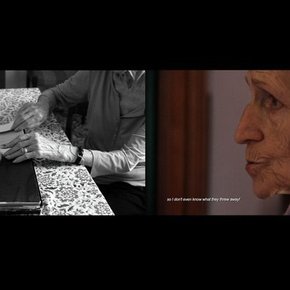
Interview with Mohamed Talbi
In this rare interview, the 93 year old Muslim scholar and historian Mohamed Talbi, whose work has yet to reach a wide audience outside of Francophone and Arab scholarship, suggests that the Muslim world is based upon pluralism.
Drawing on the diasporic reality of the Middle East and North Africa, which will surely become only more complex with time, Talbi asks 'how could one realistically aspire to an Islamic political unity or sense that one voice can speak for all?'

